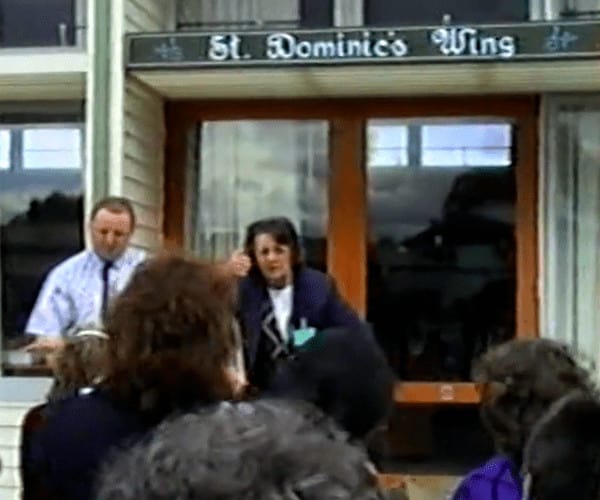
1994
video – Taonga source: St Dominic’s Catholic Deaf Centre
1944 – 1994: St Dominic’s celebrates its Golden Jubilee!
Around 250 people attended the 50th Jubilee, commemorating 50 years of St Dominic’s School for the Deaf. Footage shows many old photo albums, reunion photos being taken, a Jubilee Mass and a visit to the old Dover Street school grounds.
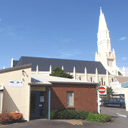
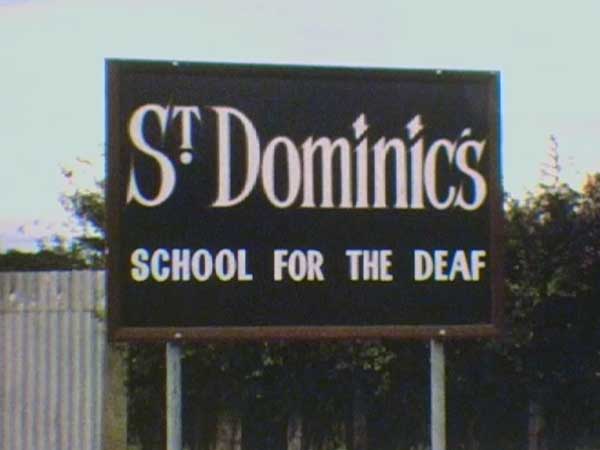
1960s
video – Taonga source: Manawatu Deaf Society
St Dominics Gala
St Dominics School for the Deaf hold their annual Gala Day – year unknown.
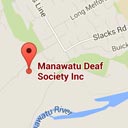
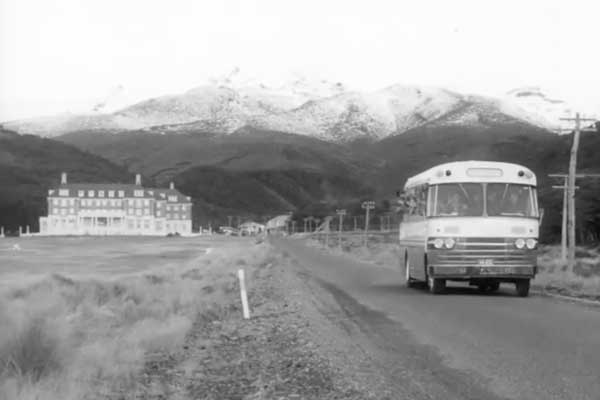
1960
video – Taonga source: Archives New Zealand
Kelston School for the Deaf students treated to a trip to Mt Ruapehu
Students from Kelston School for the Deaf enjoy a two-day trip to a snowy Mt Ruapehu.
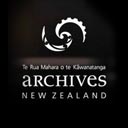
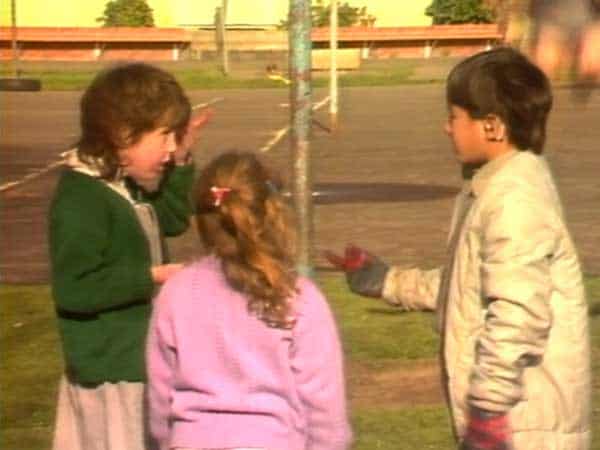
1987
video – Taonga source: Television New Zealand Archive
Parents speak of their fears for the future of St Dominic’s School for Deaf Children
Following the potential closure of St Dominic's, parents express their concerns at a community meeting for their deaf children’s future if they were to be mainstreamed into a local school.


1952
video – Taonga source: Susan Hamilton
Where are the deaf children?
This footage appears to be an early attempt in creating an educational filming activity for deaf children at Titirangi School for the Deaf.
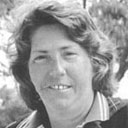

1960
video – Taonga source: Susan Hamilton
Formal opening of Parau, a beach property with a large brick hostel
Parents of deaf children raised thousands of pounds to buy a beach property at Parau where a large brick hostel was built. Groups of children, teachers and parents spent many a happy weekend there.


2023
video – Taonga source: Speak Up Kōrerotia
Speak Up Kōrerotia – Deaf Education in Aotearoa
This special NZSL Week show looks at the history and progression of deaf education in Aotearoa over time, from the oral method of communication taught for decades to the current use and teaching of NZSL. We interview Kay Drew (former teacher at the Van Asch Deaf Education Centre in Christchurch, and a CODA - child of deaf adults) and Sara Pivac Alexander (Te Herenga Waka Victoria University)

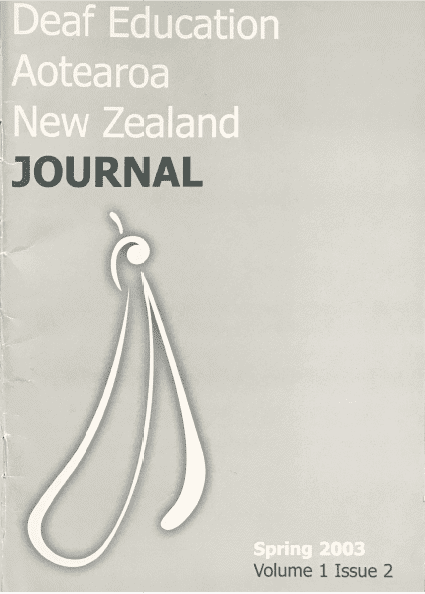
2003
publication – Taonga source: Deaf Education Aotearoa New Zealand
Deaf Education Aotearoa New Zealand Journal: Spring 2003
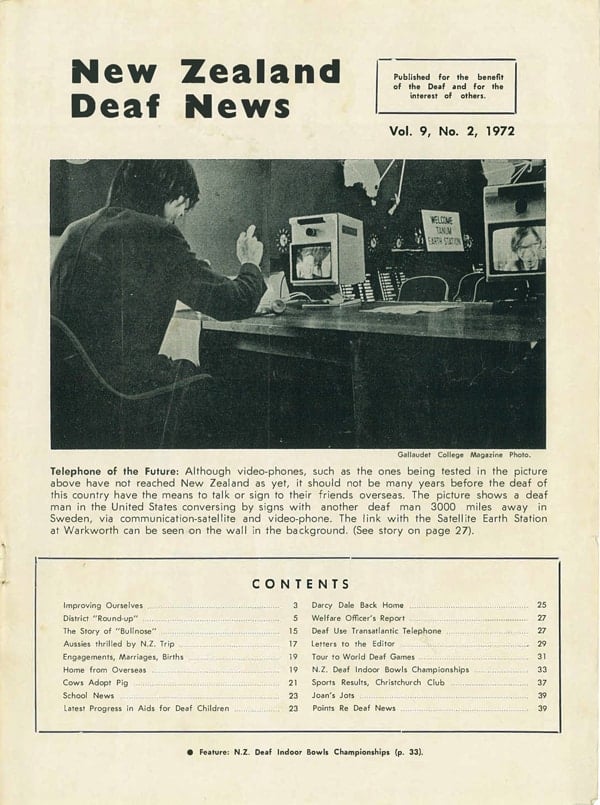
1972
publication – Taonga source: New Zealand Deaf News
NZ Deaf News: 1972 (Vol. 9, No. 2)

2009
video – Taonga source: Asia Downunder
Sign of the times
We meet Kaori Kobayashi, the first Asian Deaf Teacher in New Zealand.

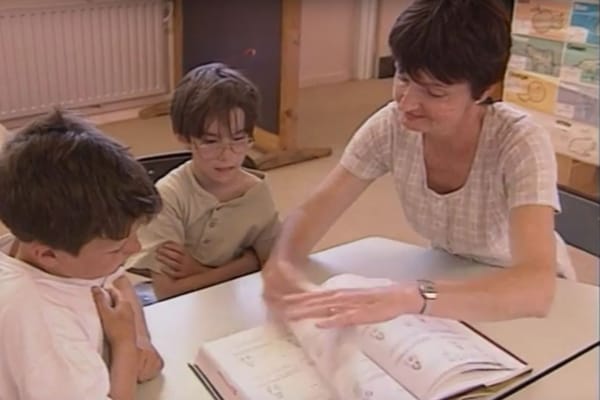
1997
video – Taonga source: Television New Zealand Archive
The modern NZSL dictionary is launched
The modern dictionary of New Zealand Sign Language has been launched, and the 'Tonight' crew visit Kelston Deaf Education Centre to see Deaf students and their NZSL tutors making good use of the resource.


1978
article – Taonga source: Courier News
New Deaf Unit at Hutt Valley College
Nine third-formers, all described as "profoundly deaf", began secondary school this year at Hutt Valley Memorial Technical College.
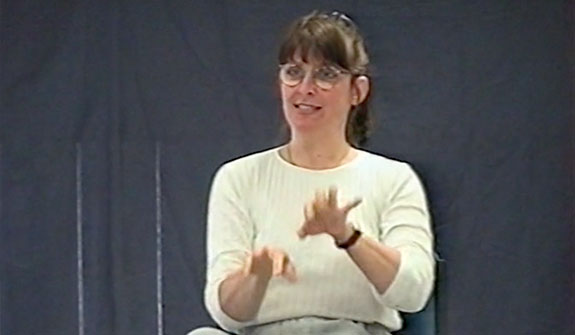
1998
video – Taonga source: AUT Visual Languages Section
Memories of Susan Thomas (1998)
Susan, born as the only deaf person in a hearing family, talks about the dialect differences in sign between the South Island and the North Island, oralism, moving cities, participating in the Trans-Tasman Games, and meeting her husband, Paul.

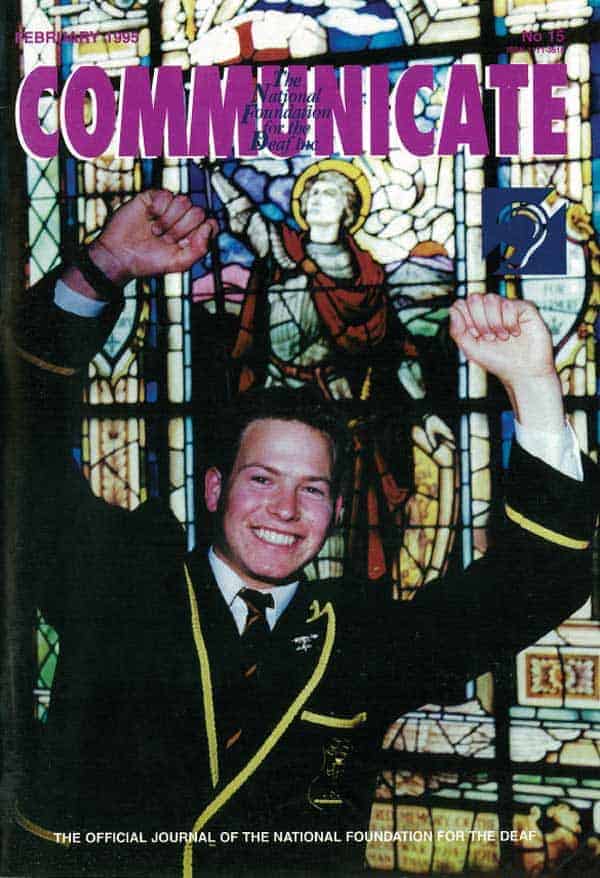
1995
publication – Taonga source: National Foundation for Deaf and Hard of Hearing
NFD Communicate: February 1995

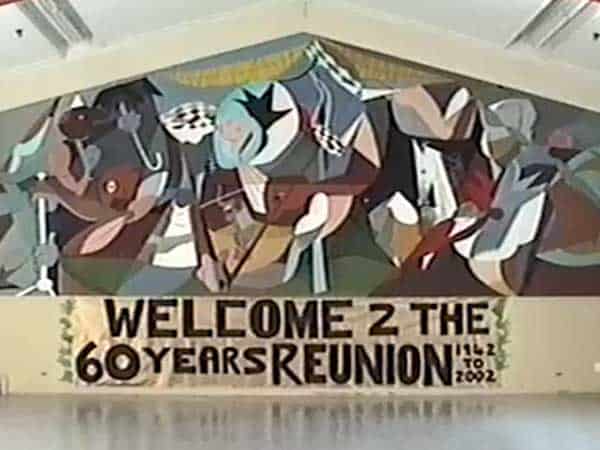
2002
video – Taonga source: Dorothy Jones
Auckland Schools for Deaf: 60th Reunion
Weekend celebrations are kickstarted with a Māori Deaf kapa haka group to perform a haka powhiri. Vintage teachers such as Les Bury briefly summarise their experiences of working in Deaf education over the years.
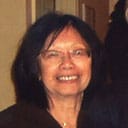

1997
video – Taonga source: Television New Zealand Archive
Eunike Mose, Pasifika Deaf student
Eunike Mose, a profoundly deaf Samoan high school student, and her mother Heather, talk about the challenges of being Deaf, particularly in relation to the family’s Pasifika heritage, and education.

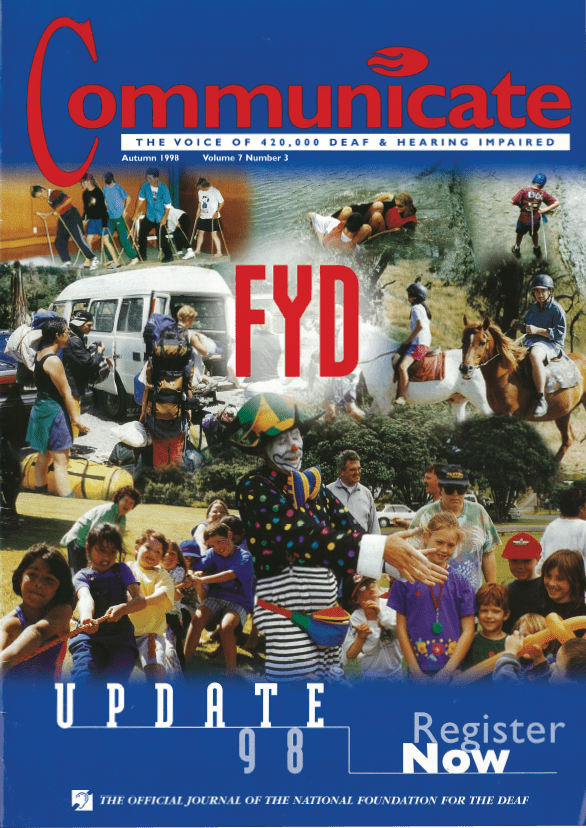
1998
publication – Taonga source: National Foundation for Deaf and Hard of Hearing
NFD Communicate: Autumn 1998

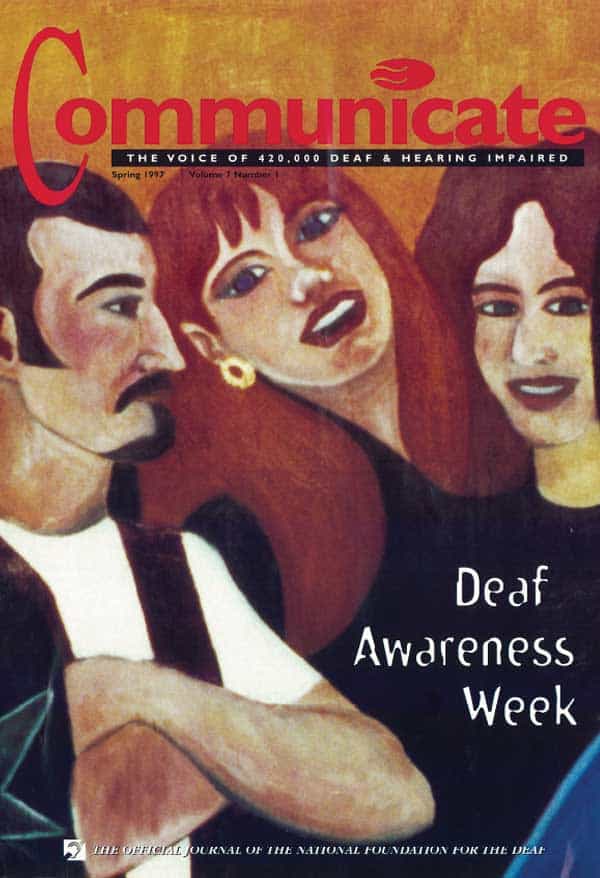
1997
publication – Taonga source: National Foundation for Deaf and Hard of Hearing
NFD Communicate: Spring 1997


1973
article – Taonga source: NZPA
Teacher Of Deaf Dies, Aged 64
The principal of the School for the Deaf, Sumner, died in Christchurch today after a short illness. Herbert Pickering was 64 years old.
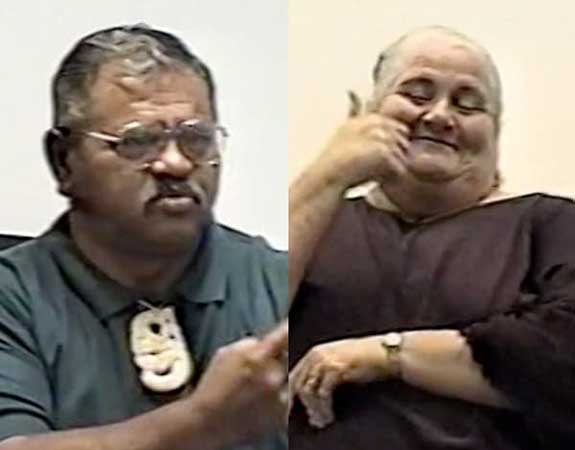
2000
video – Taonga source: AUT Visual Languages Section
Memories of Ivan and Hilda Tamepo
In an open and touching interview, Ivan and Hilda tell their tales of growing up in New Zealand, and look back on photos from their deaf schooling years.

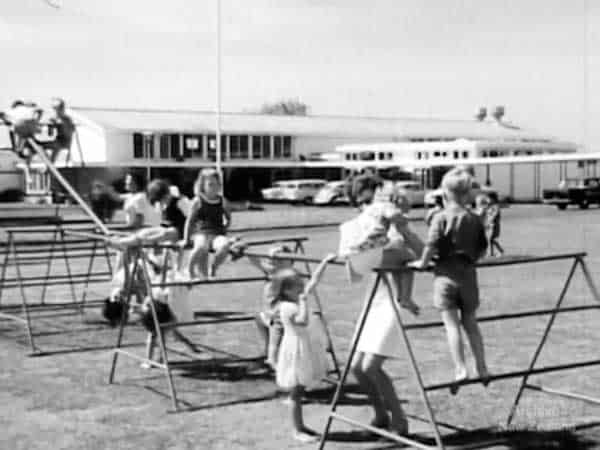
1968
video – Taonga source: St Dominic’s Catholic Deaf Centre
A Deaf Child in the Family
“A Deaf Child in the Family” is an award-winning film which shows authentic scenes from Deaf education centres at Kelston, St Dominics and Sumner, produced as a resource for families of deaf children.

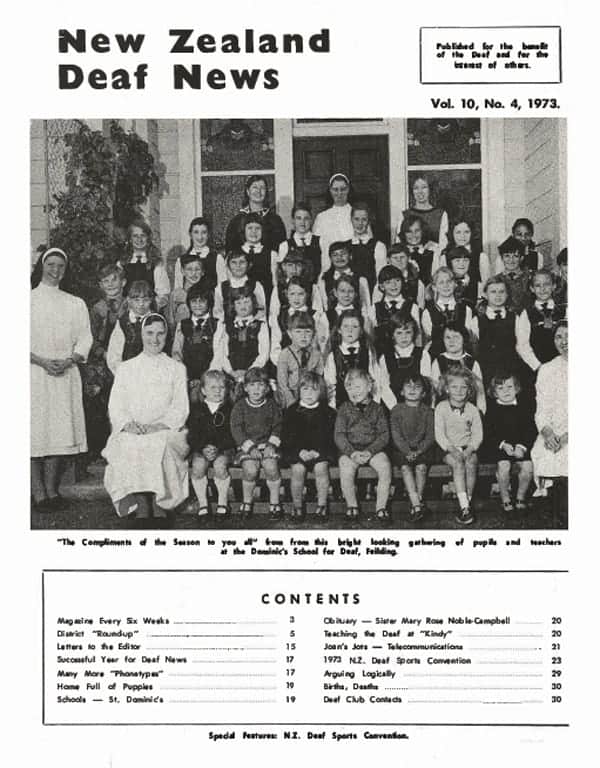
1973
publication – Taonga source: New Zealand Deaf News
NZ Deaf News: 1973 (Vol. 10, No. 4)
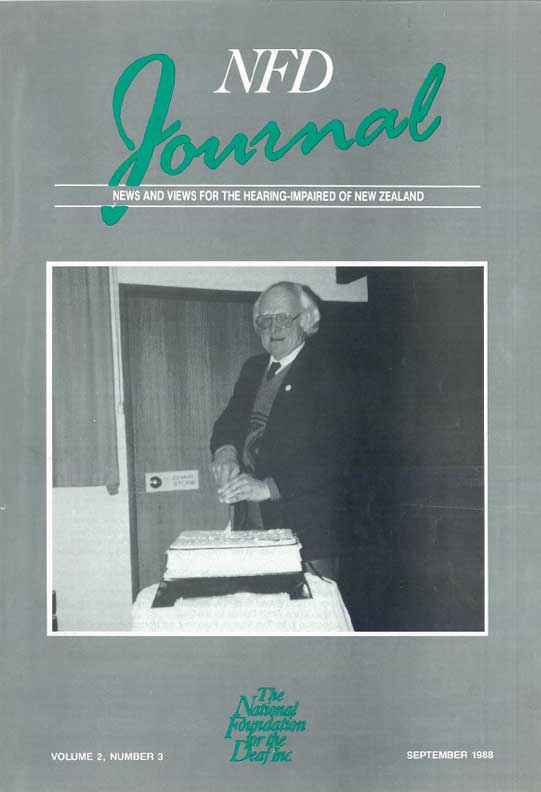
1988
publication – Taonga source: National Foundation for Deaf and Hard of Hearing
NFD Journal: September 1988 (Vol. 2, No. 3)

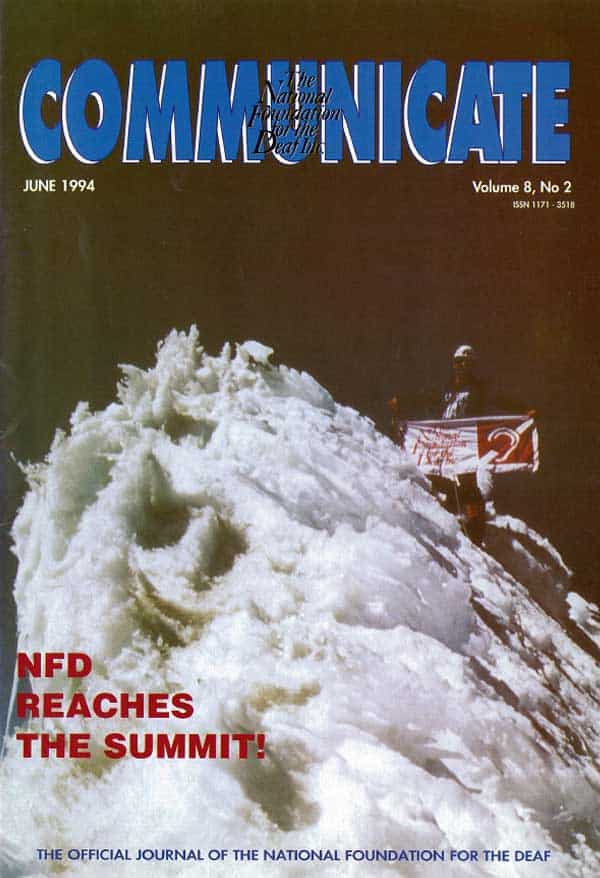
1994
publication – Taonga source: National Foundation for Deaf and Hard of Hearing
NFD Communicate: June 1994

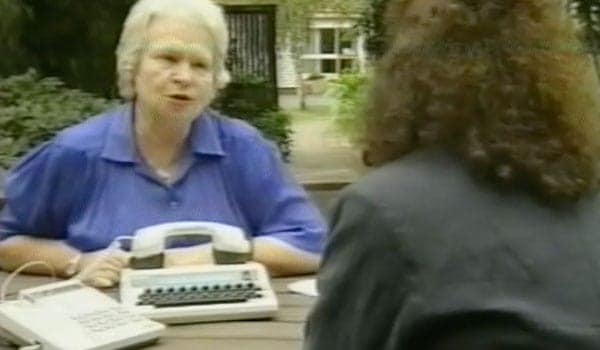
1998
video – Taonga source: Deaf Aotearoa
‘Inside Out’ interviews Hilary McCormack: Deaf education, advocacy and technology
An ‘Inside Out’ interview with Hilary McCormack where she talks about the advent of NZSL in Deaf education, advocacy and changing technology in the New Zealand Deaf community.
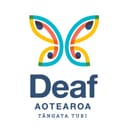
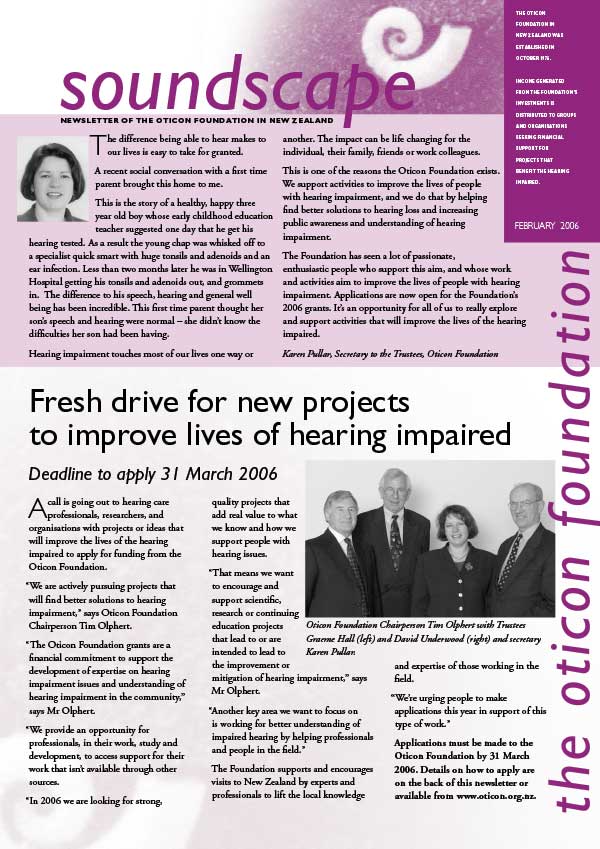
2006
publication – Taonga source: Oticon Foundation
Soundscape: February 2006

2016
video – Taonga source: Attitude Pictures
Deaf Teen’s New School
Gaby Evans is 13 and moving hundreds of kilometres from her rural home to Auckland's Kelston Deaf Education Centre. Until now she's been isolated, and never had to know how to sign. If she's going to make it on her own she's going to have to come out of her shell and learn to communicate with her deaf classmates.


2018
video – Taonga source: Deaf Children New Zealand
NZSL and Us: Zenos Tamihana, Auckland
Zenos Tamihana comes from a large, loving family that cares deeply about his communication needs. He is a lively, happy young boy who loves sports and attends Kelston Primary School in Auckland. Zenos has a teacher who is Deaf herself and uses NZSL in class. Zenos thrives at home and at school largely thanks to full access to language and communication.


2019
article – Taonga source: Stuff
Deaf children need better access to New Zealand Sign Language to close the education gap
Lack of access to interpreters means deaf children are missing out on education. There are about 3600 children in the deaf education system, of which about 96 per cent attend mainstream schools. There are just three NZSL educational interpreters working full time with students, meaning most children were missing out.

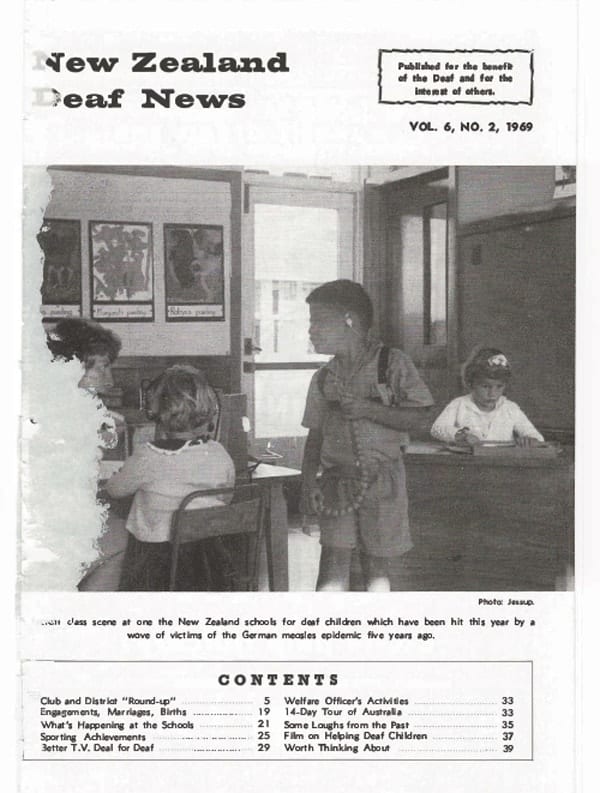
1969
publication – Taonga source: New Zealand Deaf News
NZ Deaf News: 1969 (Vol. 6, No. 2)
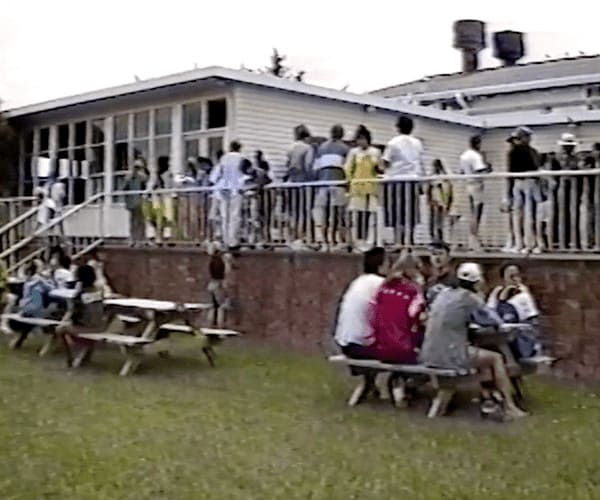
1992
video – Taonga source: Susan Hamilton
Sports Day at Kelston Deaf Education Centre
Kelston Deaf Education Centre hosts its annual sports day, with athletics, swimming and prizegiving.

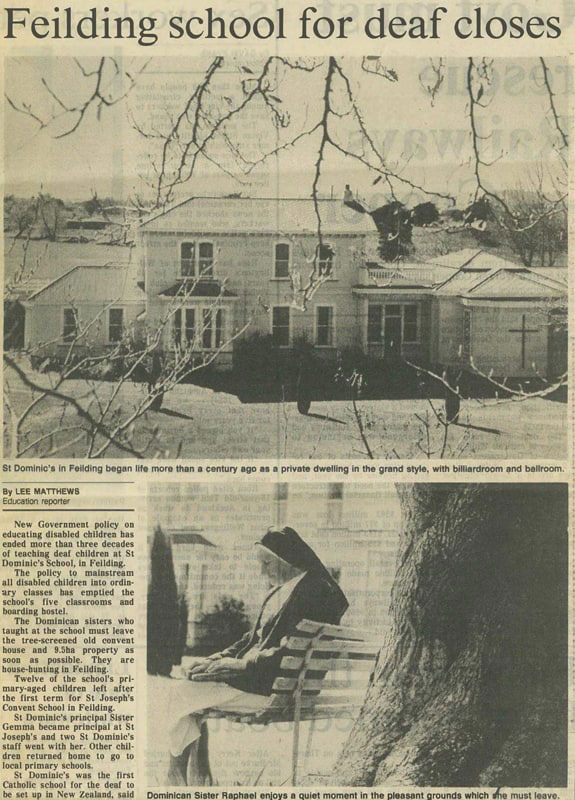
1989
article – Taonga source: Unknown
Fielding school for deaf closes
New Government policy on educating disabled children has ended more than three decades of teaching deaf children at St Dominic's in Feilding.
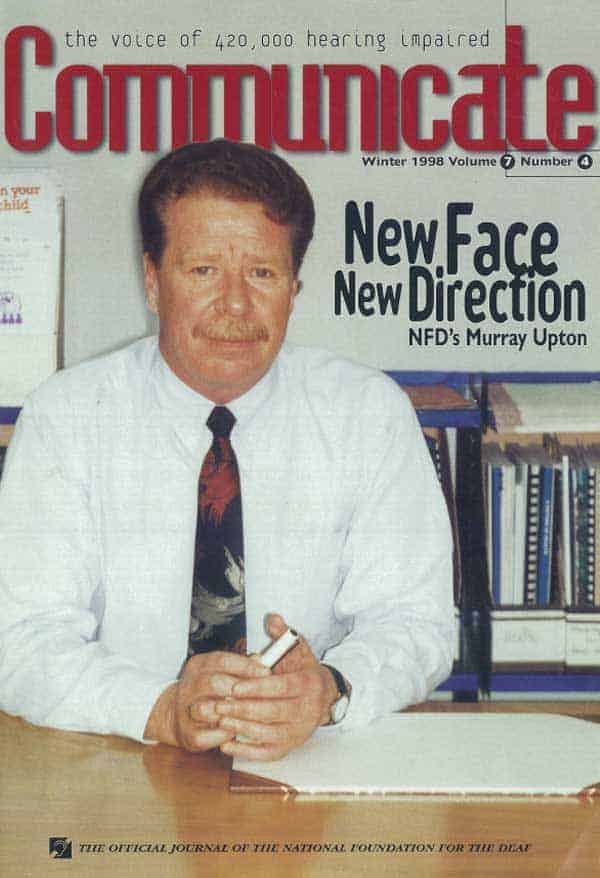
1998
publication – Taonga source: National Foundation for Deaf and Hard of Hearing
NFD Communicate: Winter 1998
MAGAZINE – NATIONAL FOUNDATION FOR THE DEAF

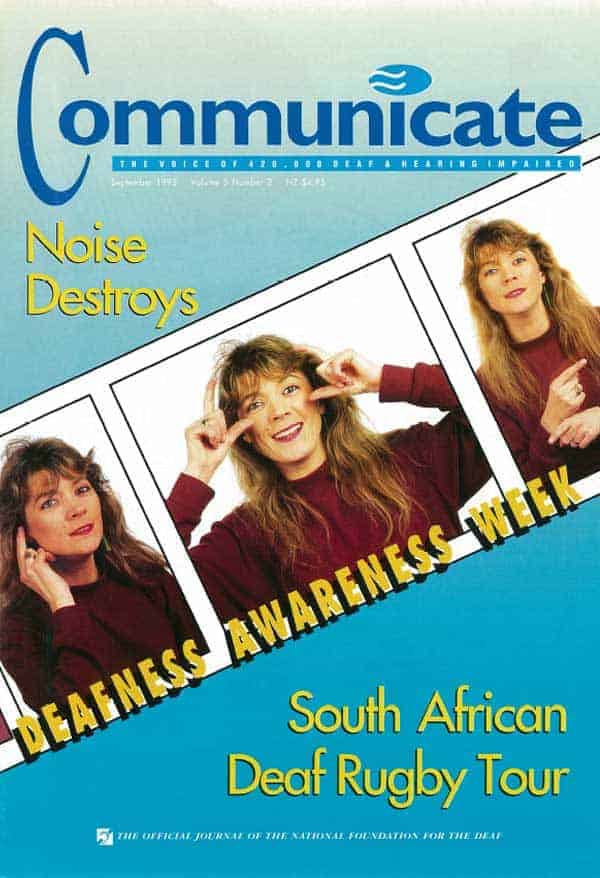
1995
publication – Taonga source: National Foundation for Deaf and Hard of Hearing
NFD Communicate: September 1995

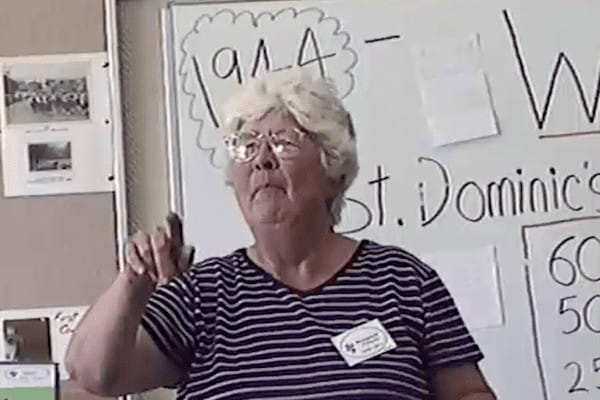
2004
video – Taonga source: St Dominic’s Catholic Deaf Centre
St Dominic’s 60th Jubilee
Ex-pupils talk about their memories and tell stories about St Dominic’s at the 60th reunion in Feilding, during Waitangi Weekend in 2004.

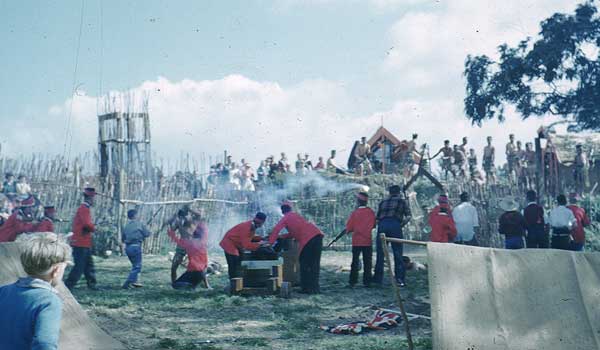
1959
video – Taonga source: Auckland Deaf Society
Te Pakanga O Whau – The Battle of Whau: Drama by Kelston School for the Deaf
The Battle of Whau: a drama by Kelston Deaf students for the opening ceremony of Kelston School for the Deaf, 7th November 1959.
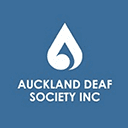

1955
video – Taonga source: Ngā Taonga Sound & Vision
Sumner School for the Deaf 75th Jubilee
The 75th Jubilee of Sumner School for the Deaf in Christchurch, including alumni parades and marching girls!
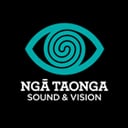
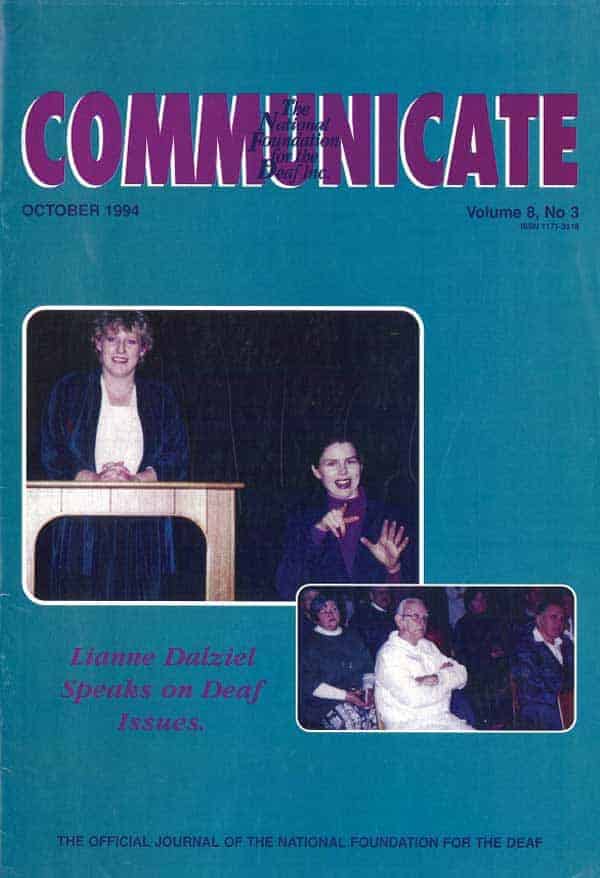
1994
publication – Taonga source: National Foundation for Deaf and Hard of Hearing
NFD Communicate: October 1994

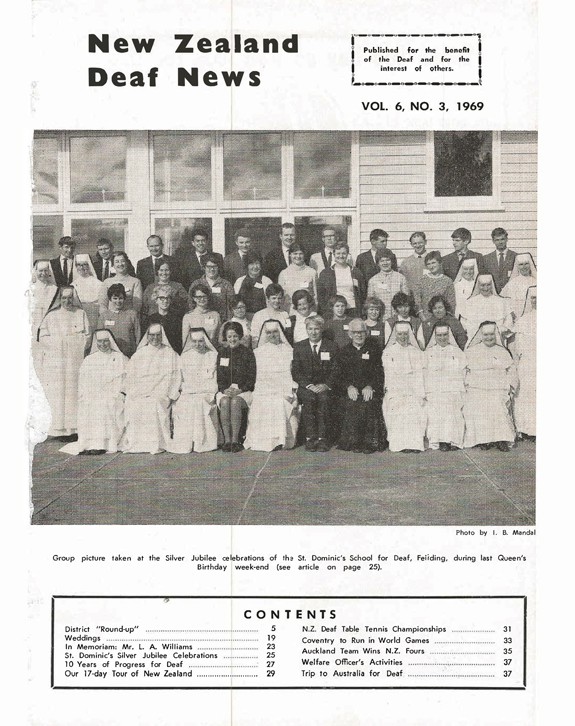
1969
publication – Taonga source: New Zealand Deaf News
NZ Deaf News: 1969 (Vol. 6, No. 3)
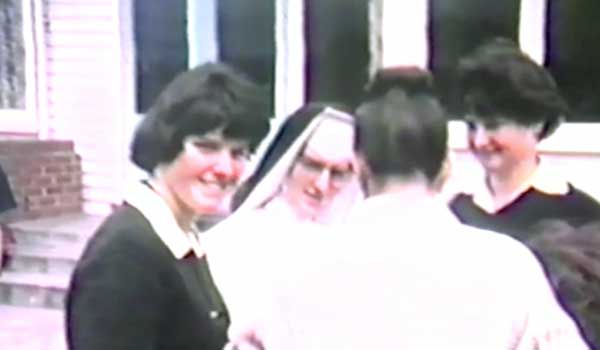
1965
video – Taonga source: Mary Johnson
St Dominic School for the Deaf, Fielding: First Reunion, 1965
St Dominics School for the Deaf in Fielding celebrates their first school reunion in 1965. The reunion was one year after the school had relocated to Fielding from Wellington.
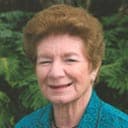
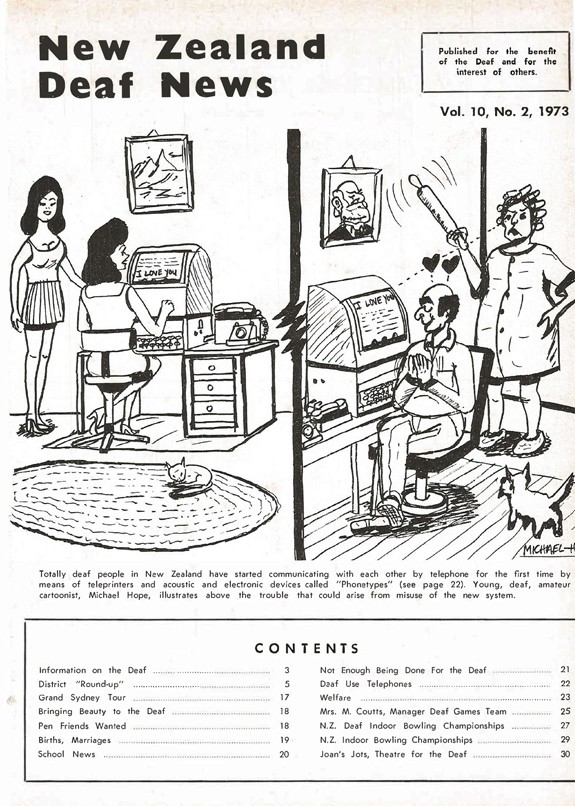
1973
publication – Taonga source: New Zealand Deaf News
NZ Deaf News: 1973 (Vol. 10, No. 2)
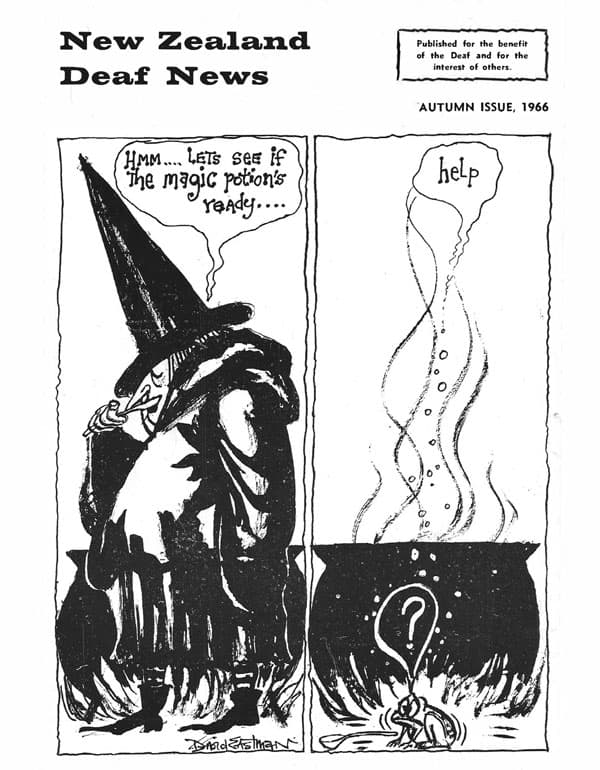
1966
publication – Taonga source: New Zealand Deaf News
NZ Deaf News: Autumn 1966 (Vol. 3, No. 3)
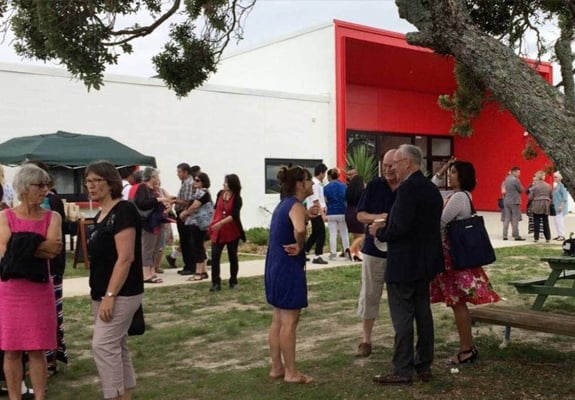
2017
article – Taonga source: Western Leader
Milestone in deaf education
A multimillion dollar education centre is helping deaf students communicate. More than 400 people attended the opening of the Kelston Deaf Education Centre (KDEC) rebuild on February 28, 2017.

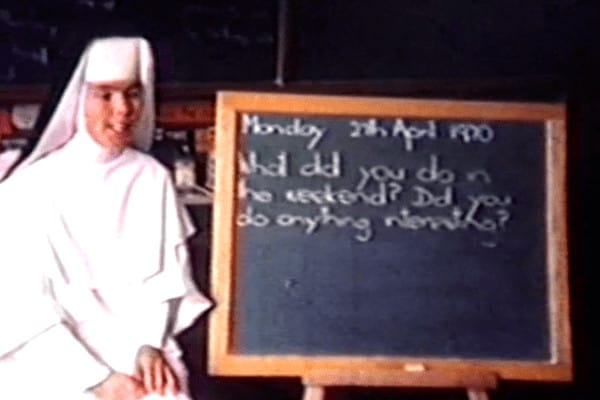
1970
video – Taonga source: St Dominic’s Catholic Deaf Centre
Teaching the Deaf: St Dominic’s School for the Deaf in Feilding
What was school life was like for pupils who attended St Dominic’s School for the Deaf in Feilding? Footage includes hearing tests, classroom teaching, and celebrating a pupil’s 5th birthday with his classmates, before Mass with the Sisters.


1993
video – Taonga source: Television New Zealand Archive
Spotlight on Pasifika Deaf
Tangata Pasifika visits Kelston Deaf Education Centre and meets with a number of Pasifika Deaf students part of the school’s transition programme, interviewing Rosie Amituanai and her family.

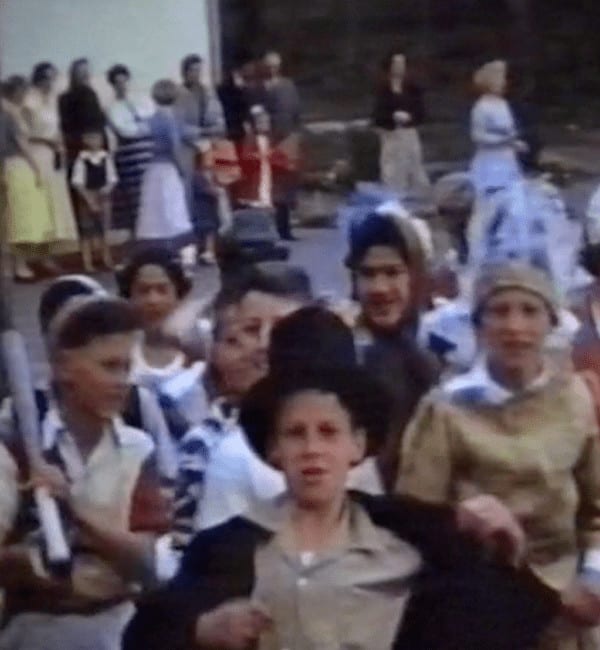
1955
video – Taonga source: Susan Hamilton
Christmas parade at Titirangi School for the Deaf
The courtyard at Titirangi School for Deaf’s came in handy in events such as the Christmas parade with everyone in fancy dress!

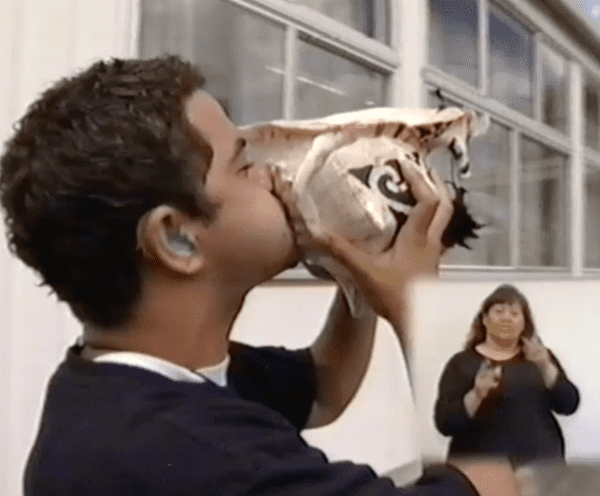
2004
video – Taonga source: Rūaumoko Komiti
The experiences of Māori Deaf
This segment from Māori TV’s Te Hēteri focuses on the experiences of Māori Deaf, catching up with Patrick Thompson, Whiti Ronaki, and Hemi Hema.
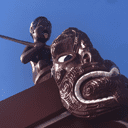
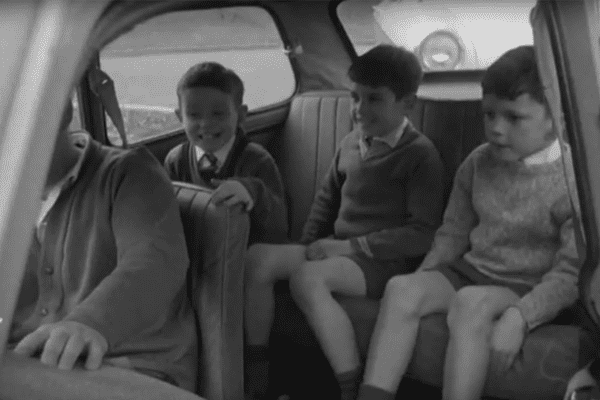
1968
video – Taonga source: Television New Zealand Archive
Deaf children enjoy a car rally
Children from Sumner School for the Deaf test their navigational abilities in a car rally at Sumner.

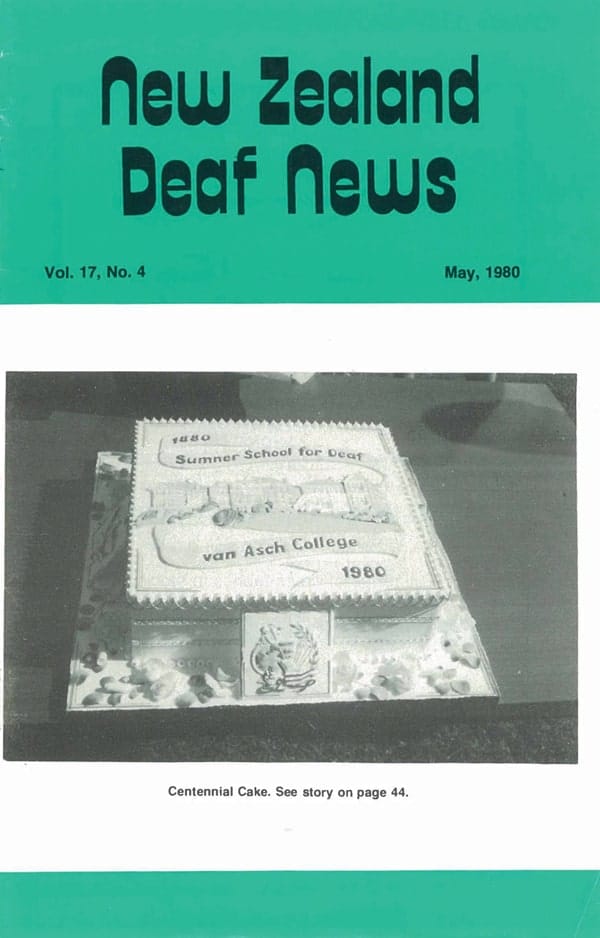
1980
publication – Taonga source: New Zealand Deaf News
NZ Deaf News: May 1980 (Vol. 17, No. 4)
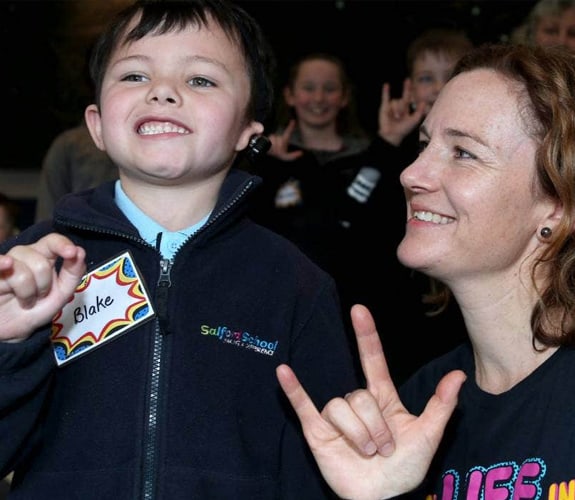
2019
article – Taonga source: Stuff
New Zealand’s two deaf education centres to merge
New Zealand's two deaf education centres will become one next year as Kelston Deaf Education Centre and van Asch Deaf Education Centre merge from Term 3, 2020.


1956
video – Taonga source: Susan Hamilton
Picnic by the Parau Camp House
Titirangi students and their families picnic at the Parau Camp House in West Auckland. The property was purchased in 1955 and groups of children, teachers and parents spent many a happy weekend here.


2019
video – Taonga source: Merge NZ
The Watercooler: Deaf Edition
Three Deaf panelists talk about their experiences in communication, schooling, and work. Facilitated by a Deaf MC with interpreted voice over these hilarious, heartwarming experiences give an insight into the Deaf community.


1957
video – Taonga source: Susan Hamilton
Parent’s Day at Titirangi School for Deaf (1957)
Annual Parent’s Day at Titirangi School for Deaf, where students show their parents around the school and put on a performance – dancing, tītītōrea (short stick games) with end-of-year prizes.

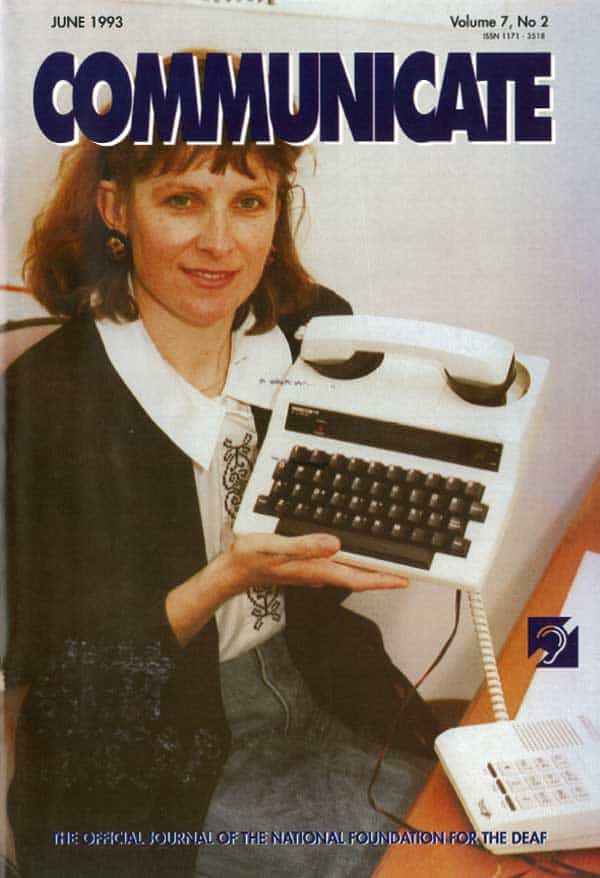
1993
publication – Taonga source: National Foundation for Deaf and Hard of Hearing
NFD Communicate: June 1993

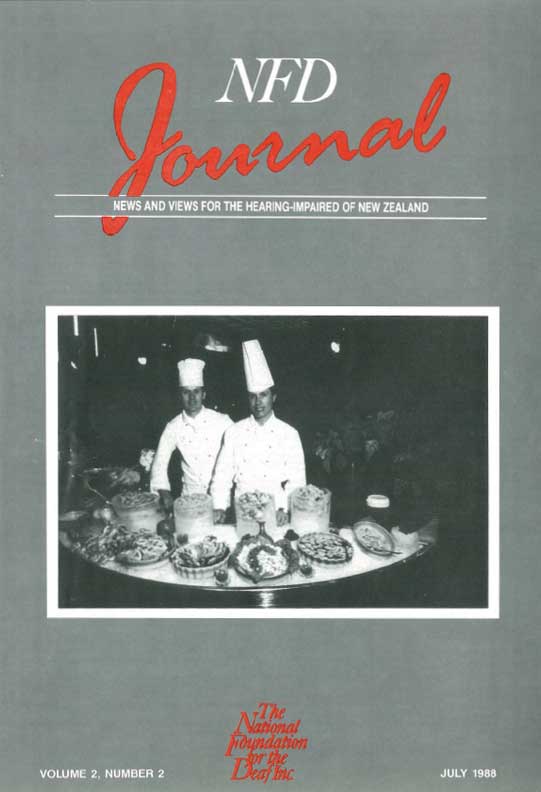
1988
publication – Taonga source: National Foundation for Deaf and Hard of Hearing
NFD Journal: July 1988 (Vol. 2, No. 2)

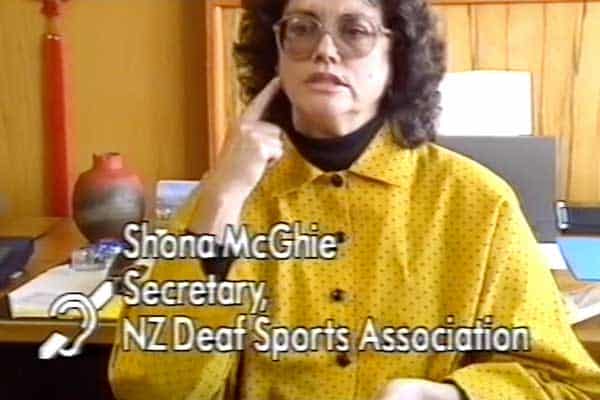
1989
video – Taonga source: Deaf Aotearoa
National Foundation for the Deaf promotional video
National Foundation for the Deaf produce a promotional video explaining their role and the purpose of their member organisations.


2000
video – Taonga source: Hilda Tamepo
Memories of Verna McRae
Verna McRae is filmed at her home in Napier alongside her husband, John. Verna talks entertainingly about her life growing up on a Manawatu farm, going to Sumner School for the Deaf, work, travelling, and married life.
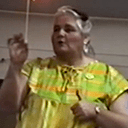
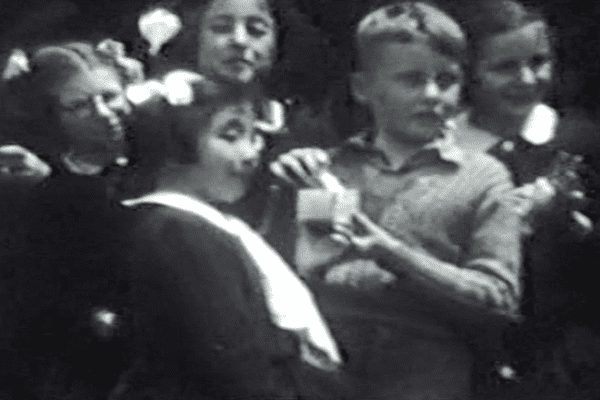
1955-65
video – Taonga source: St Dominic’s Catholic Deaf Centre
A montage of St Dominic’s Christmas Picnics between 1955 and 1965
Footage from 1955 – 1965 during the annual Christmas Picnics held by St Dominic’s School for the Deaf in Island Bay. In New Zealand fashion, Santa arrives on horseback, bringing presents to the pupils who all take turns riding the horse!

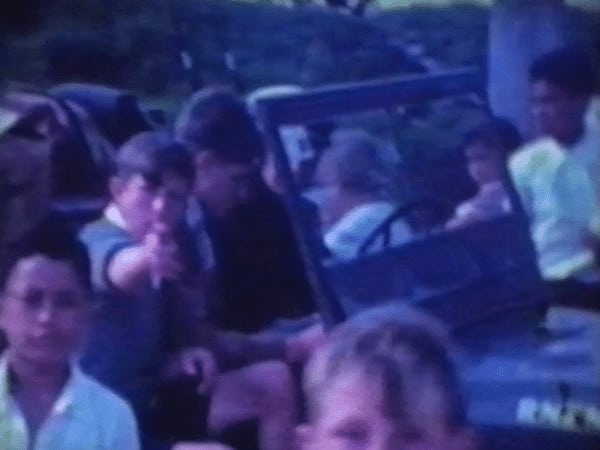
1950
video – Taonga source: Susan Hamilton
Titirangi School for the Deaf students picnic at Motuihe Island
Boarding students at Titirangi School for the Deaf are treated to a day out to Motihue Island (Te Motu-a-Ihenga) in the Hauraki Gulf, 17 kilometres from downtown Auckland.

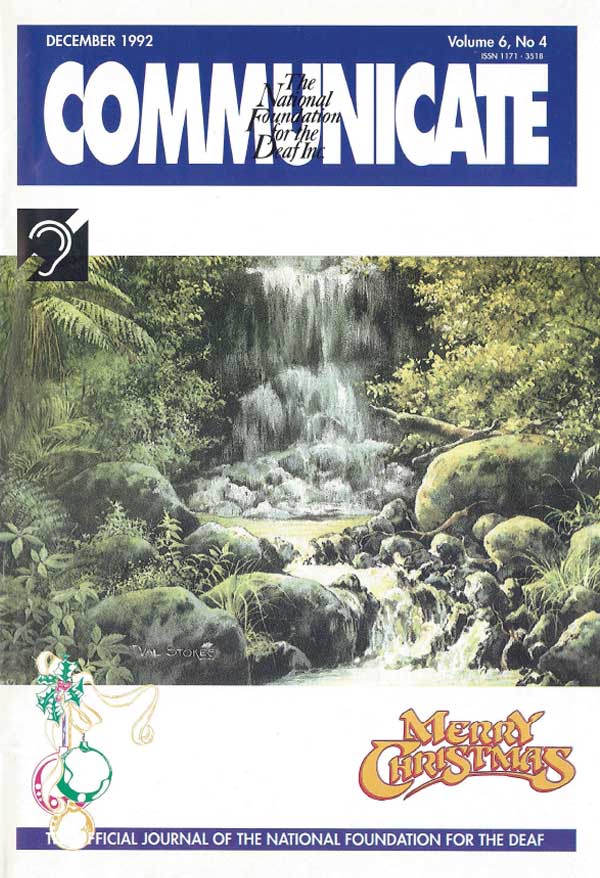
1992
publication – Taonga source: National Foundation for Deaf and Hard of Hearing
NFD Communicate: December 1992

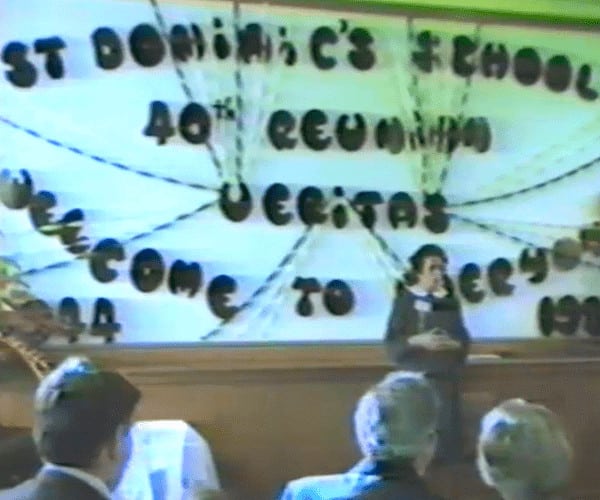
1984
video – Taonga source: St Dominic’s Catholic Deaf Centre
St Dominic’s School for the Deaf 40th Anniversary Reunion
Footage from the 40th Anniversary of St Dominic’s school for the Deaf in Feilding held in June of 1984. This video shows a tour of the school grounds, welcoming speeches to attendees and the celebrations that follow over the weekend.

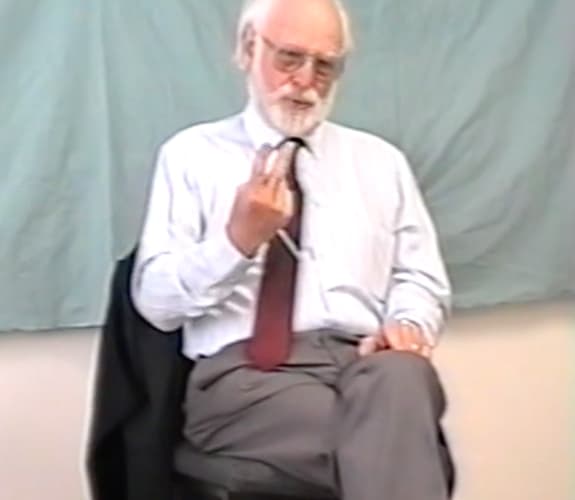
1992
video – Taonga source: AUT Visual Languages Section
Memories of John Hunt
John Hunt, well-known for his involvement in the Deaf community – talks about establishing the NZ Deaf News, his journey towards becoming a life member of NZ Deaf Sports Association, having had a role in its founding; working as the first Deaf Field Officer for NZAD, and compiling ‘The Story of the Auckland Deaf Society Inc 1937-1987.

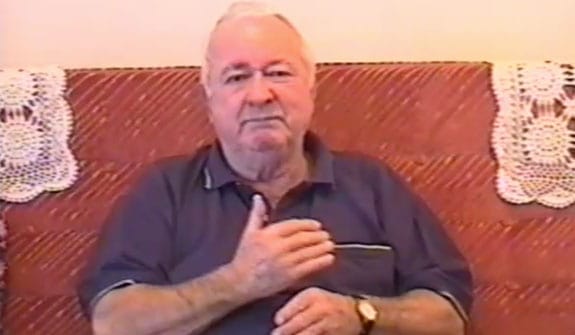
2000
video – Taonga source: Hilda Tamepo
Memories of John McRae
John McRae is filmed at his home in Napier where he lived with his wife Verna. John explains some highlights from his life story including his experiences at school, travelling the world for Deaf sports, and his involvement in the Deaf community. The video includes his commentary of various photos and objects in their house.


2018
video – Taonga source: Darryl Alexander
The Making of an NZSL Friendly School
The Making of a NZSL Friendly School follows Andre, who began as a new entrant at the school in 2016, and the journey of his teachers, classmates and wider school community in learning NZSL and incorporating it into school curriculum.

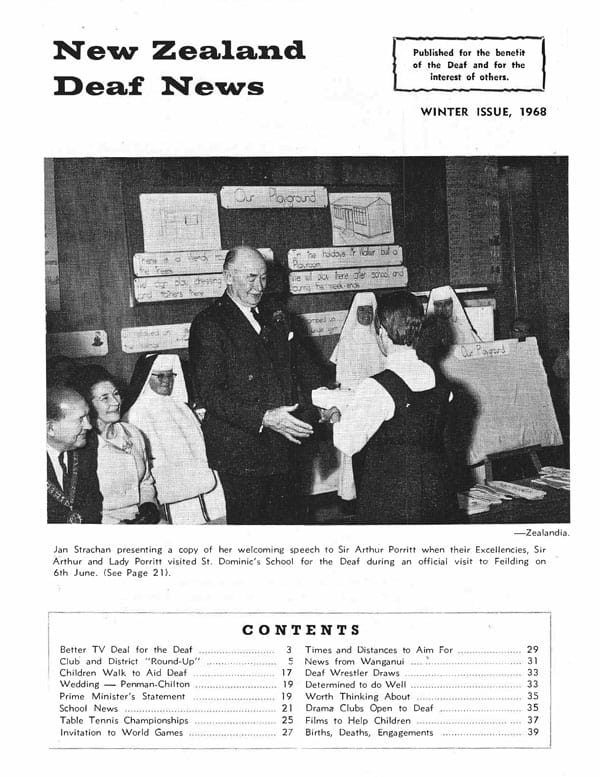
1968
publication – Taonga source: New Zealand Deaf News
NZ Deaf News: Winter 1968 (Vol. 5, No. 4)
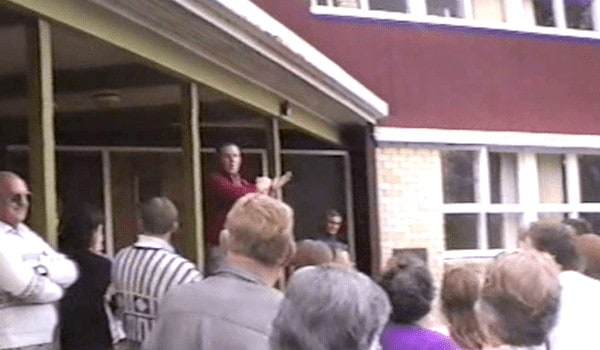
1994
video – Taonga source: St Dominic’s Catholic Deaf Centre
Celebrations at the St Dominic’s Golden Jubilee
Footage from the 50th Jubilee of St Dominic’s School for the Deaf, with over 200 people attending a weekend of festivities at the Fielding Racecourse during the Anzac Weekend of April 1995.

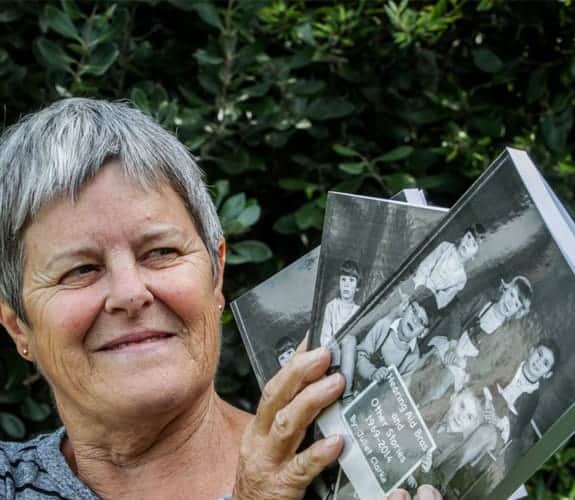
2017
article – Taonga source: Hawkes Bay Today
Stories of Hawke’s Bay’s deaf school heard
Among the schooling communities in Hawke's Bay perhaps one of the most unique is the deaf community; many of whom were taught at Napier's Onekawa Deaf Unit. Their stories, heard over the past two years by resource teacher of the deaf Juliet Clarke, have now been compiled into a one-of-a-kind book 'Hearing Aid Bras and Other Stories 1969-2014.'


1984
video – Taonga source: Television New Zealand Archive
You and Your Child – Deaf edition
'You and Your Child' programme focuses on Deaf children, education and language and interview some parents about their Deaf children.


2017
video – Taonga source: Meghan Coppage
Memories of Susan Hamilton
Susan Hamilton is interviewed by Meghan Coppage, where she recounts a range of experiences from her life. From growing up at a Deaf school, to her memories of time in the Deaf community in bygone days, to seeing the changes at Kelston Deaf Education Centre including the transition to new school building.


1986
video – Taonga source: Ngā Taonga Sound & Vision
The Magic Park
In November 1986, film maker Ann Andrews organised a week-long drama workshop for six 13 year olds from Kelston School for the Deaf. The workshop concluded with the play, The Magic Park, written and acted by the students.


2019
video – Taonga source: Attitude Pictures
Travelling with sign language
Last week we met the Fergusons, a family of five who communicate using NZSL. Here, we join the Fergusons on their trip of a lifetime attending the World Federation of the Deaf Congress — in Paris.

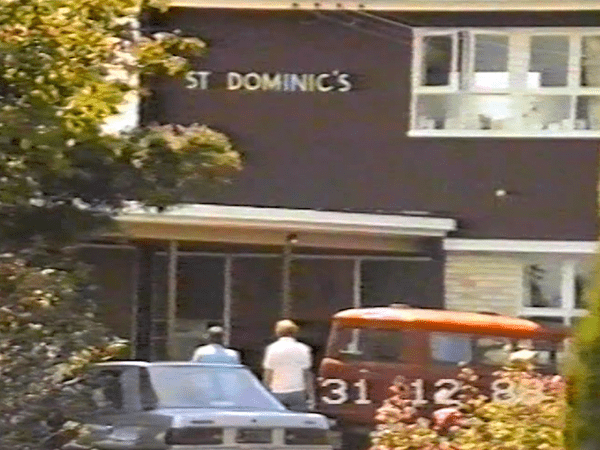
1989
video – Taonga source: St Dominic’s Catholic Deaf Centre
Last Reunion on St Dominic’s Feilding Grounds
The four-day festivities at St Dominic’s School for the Deaf during New Year’s 1989/1990 were a weekend full of activities! It was the last such event on the St Dominic’s Feilding grounds with a deaf unit set-up at St Joseph’s School in Feilding in May 1989.

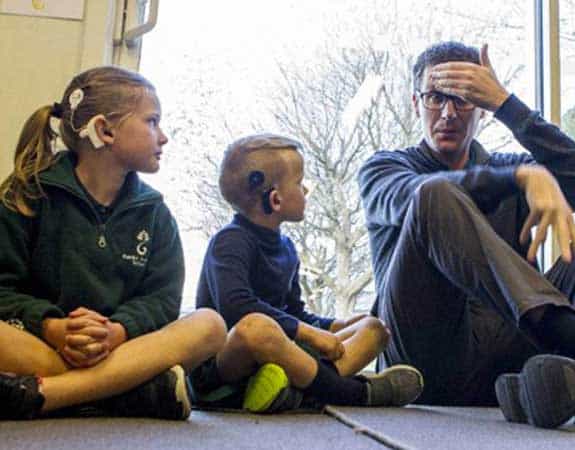
2018
article – Taonga source: Stuff
Report reveals uncertainty of future of deaf education
Serious inadequacies of a deaf education board serving thousands of children are being addressed by senior Ministry of Education officials. The ministry confirmed four complaints had been laid about student safety, staffing and low achievement at Auckland's Kelston Deaf Education Centre.

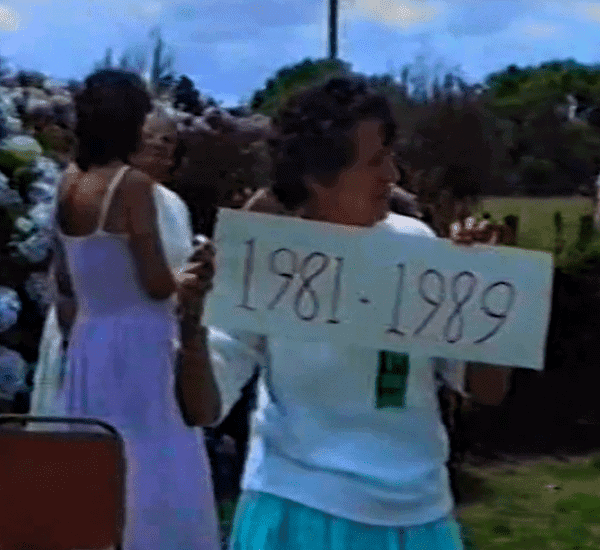
1989-90
video – Taonga source: St Dominic’s Catholic Deaf Centre
St Dominic’s 45th Jubilee
There are many speeches from past pupils and staff recalling their time at St Dominic’s. The casually filmed footage covers part of the four-day 45th reunion at St Dominic’s School for the Deaf, with many speeches from past pupils and staff recalling their time at St Dominic’s.

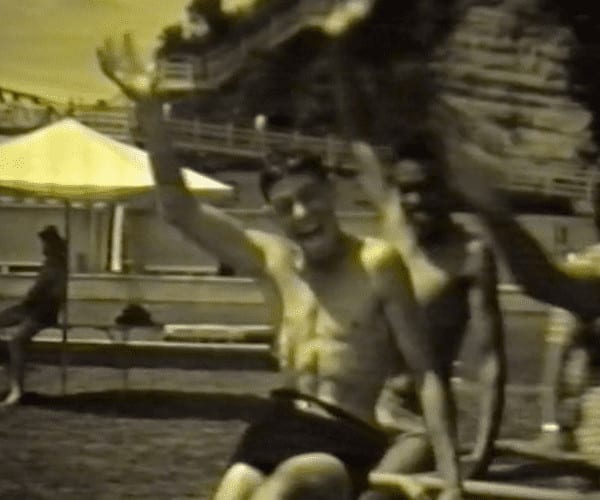
1952
video – Taonga source: Susan Hamilton
Day trip to the Parnell Baths
Students at Titirangi School for the Deaf are treated to a day trip to the Parnell Baths.


1999
video – Taonga source: Rūaumoko Komiti
Mai Time features NZSL!
Mai Time made one of their episodes accessible in NZSL to mark Deaf Awareness Week 1999. KDEC’s sign singing choir and Patrick Thompson made an appearance along with as did Rūaumoko Marae’s kapa haka roopu.

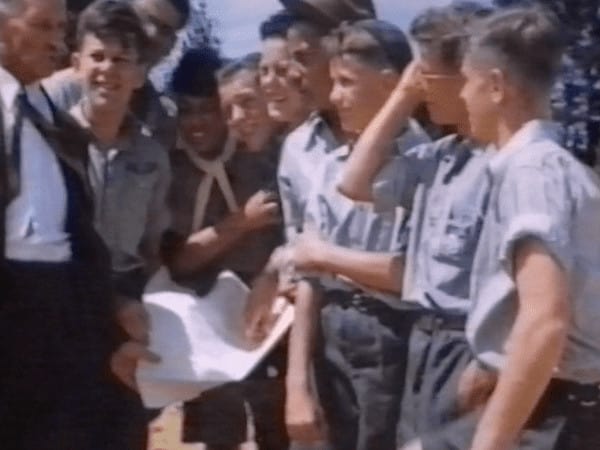
1956-57
video – Taonga source: Susan Hamilton
Kelston School for Deaf: Clearing of the Ground and Construction
Students from the Titirangi School for the Deaf visit the construction site of the future Kelston School for the Deaf.


2014
video – Taonga source: Ministry of Education
National Deaf Youth Hui 2014
In August 2014, the Ministry of Education brought Deaf students together from across New Zealand for a weekend of ideas, learning and friendship. The Ministry called the hui to better understand what school is really like for Deaf students and to gather their ideas on how things could be improved. This video captures the workshops, fun activities and growing friendships that happened over the weekend.

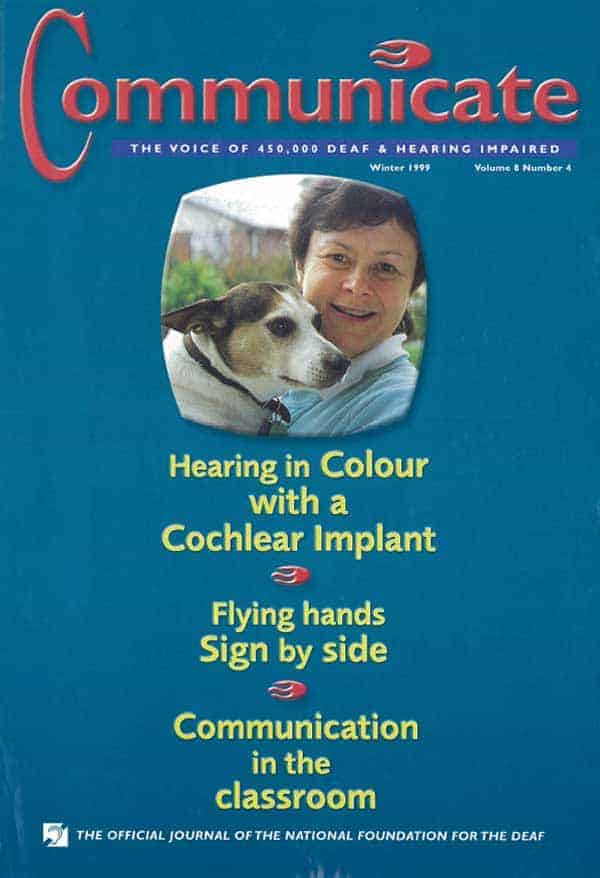
1999
publication – Taonga source: National Foundation for Deaf and Hard of Hearing
NFD Communicate: Winter 1999

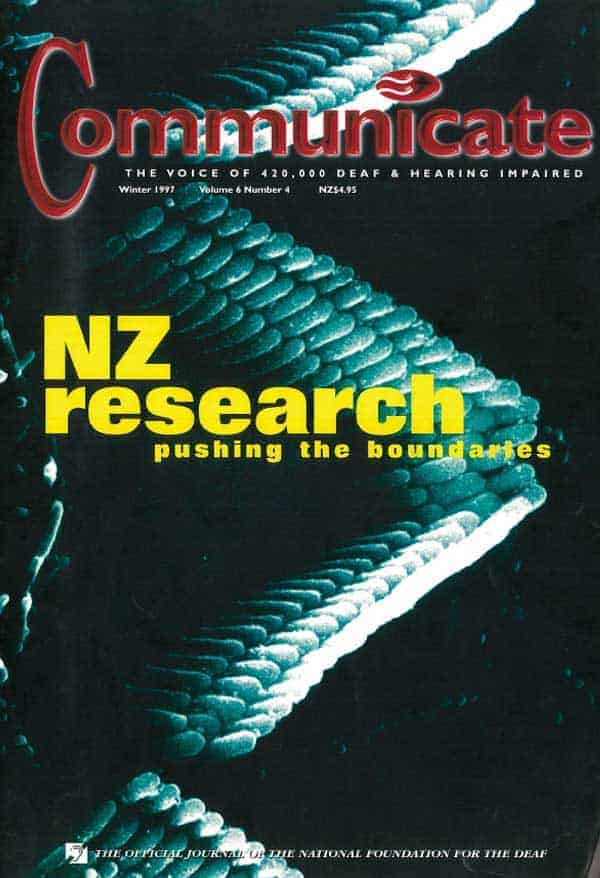
1997
publication – Taonga source: National Foundation for Deaf and Hard of Hearing
NFD Communicate: Winter 1997


1962
video – Taonga source: Susan Hamilton
Driver training for Deaf students
Two traffic officers visit Kelston to teach older Deaf students the drivers road code.


2018
video – Taonga source: Deaf Children New Zealand
NZSL and Us: Diamond Johnson, Hamilton
Diamond is a bubbly and active little girl who loves a challenge. Her whānau embraces all three of New Zealand’s languages: English, Te Reo Māori and NZSL. Her mother is determined to improve her NZSL by attending sign language classes so she that she will be able to communicate with Diamond fully as she grows up. Her whānau has a strong commitment to ensure Diamond is exposed to as much NZSL as possible including access to Deaf role models.

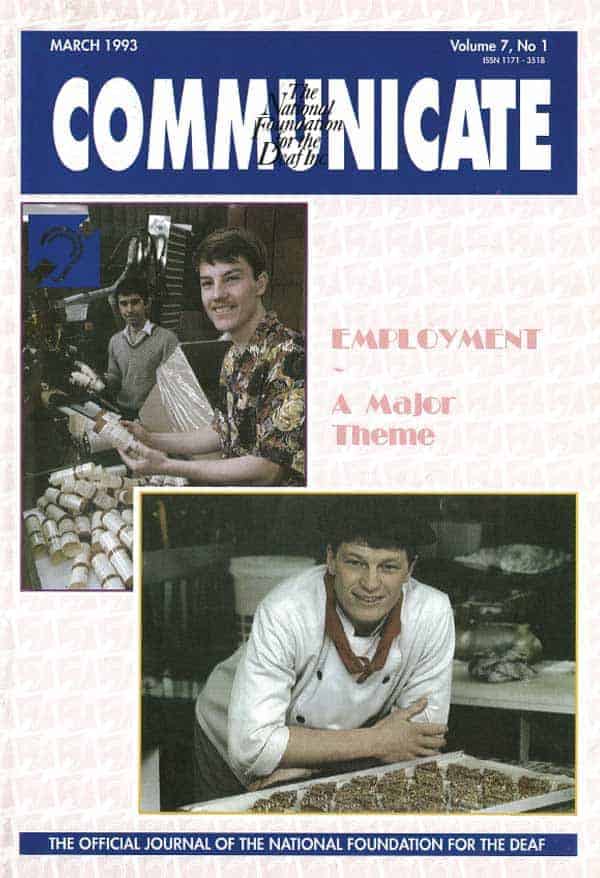
1993
publication – Taonga source: National Foundation for Deaf and Hard of Hearing
NFD Communicate: March 1993

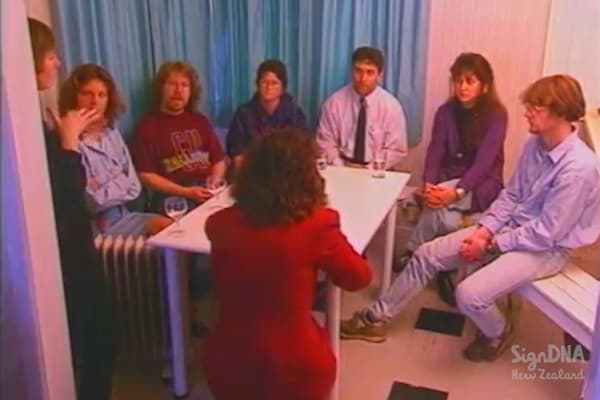
1994
video – Taonga source: Television New Zealand Archive
A Deafening Silence
A ‘Frontline’ documentary that touches upon an on-going topic - Deaf Education - in the Deaf community, not only in New Zealand but worldwide as well. In 2019, the message remains as familiar as it was twenty-five years ago.

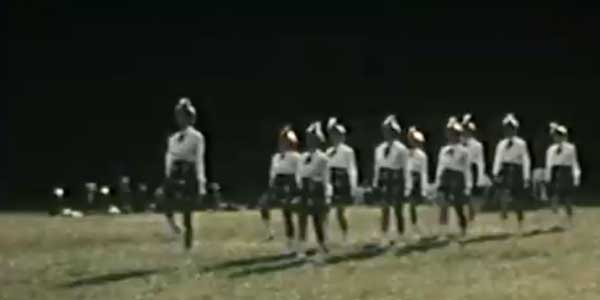
1959
video – Taonga source: Ngā Taonga Sound & Vision
Sumner School for the Deaf Marching Girls
The Deaf Sumner School for the Deaf marching team participate in a marching competition in Auckland, 1958.

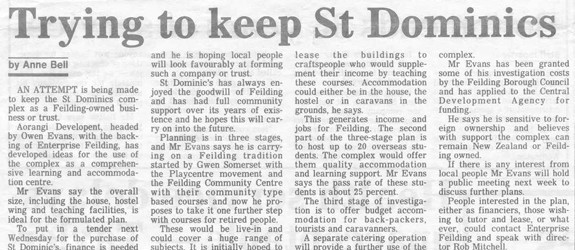
1990
article – Taonga source: Unknown
Trying to keep St Dominics
An attempt is being made to keep the St Dominics complex - the house, hostel wind and teaching facilities - as a Feilding-owned business or trust.
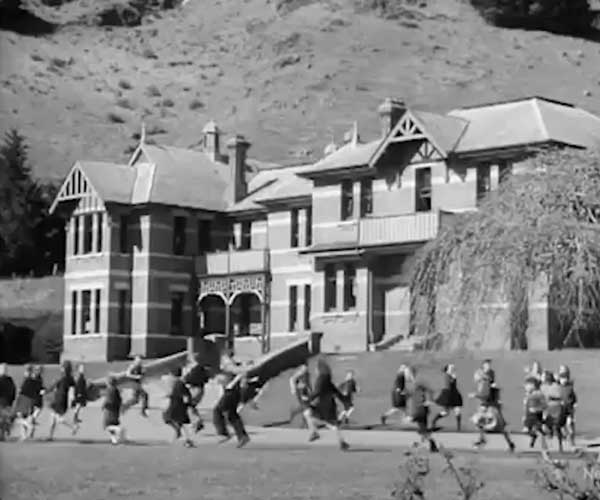
1947
video – Taonga source: Archives New Zealand
National Film Unit visits Sumner School for the Deaf – Student life
The National Film Unit visits Sumner School for the Deaf to film a typical day at the school.

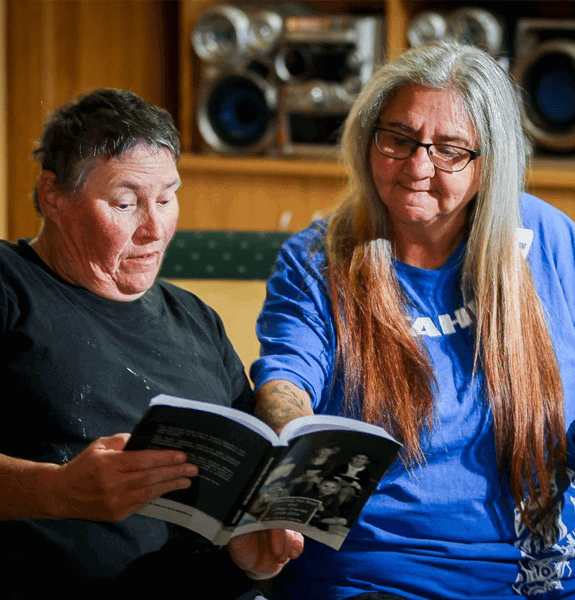
2016
article – Taonga source: Hawkes Bay Today
Past pupils to reunite 50th Anniversary of the Onekawa School Deaf Unit
This weekend past and present pupils of Onekawa School will be coming together to celebrate the 50th Anniversary of the Onekawa School Deaf Unit. From March 22 to March 25, ex-pupils and friends of the Onekawa deaf unit will meet in Hawke's Bay to remember their schooling experiences, share stories and visit the site of the old unit.

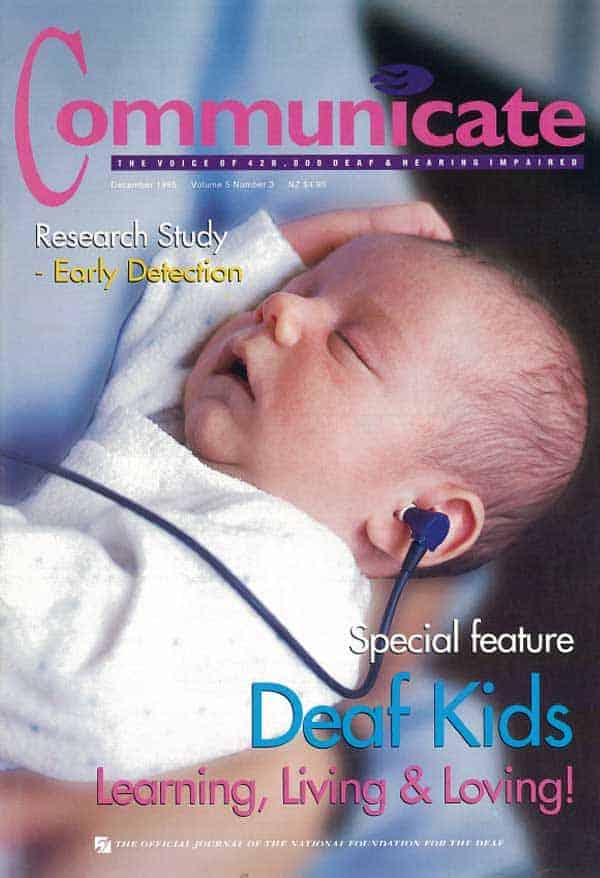
1995
publication – Taonga source: National Foundation for Deaf and Hard of Hearing
NFD Communicate: December 1995

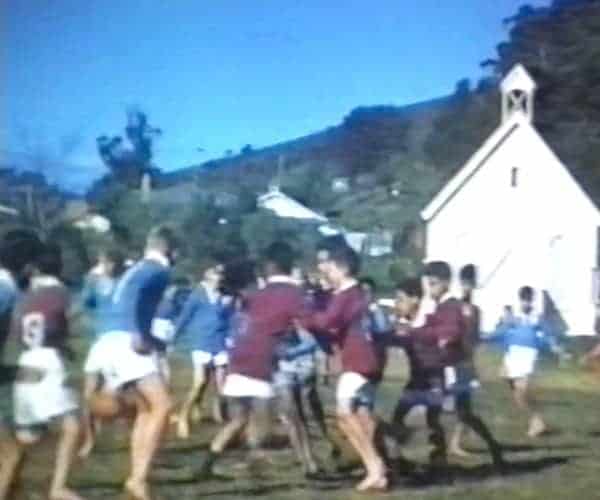
1961
video – Taonga source: Susan Hamilton
Kelston School for Deaf sends its netball and rugby teams to Russell
Kelston School for Deaf sends its netball and rugby teams to Russell.

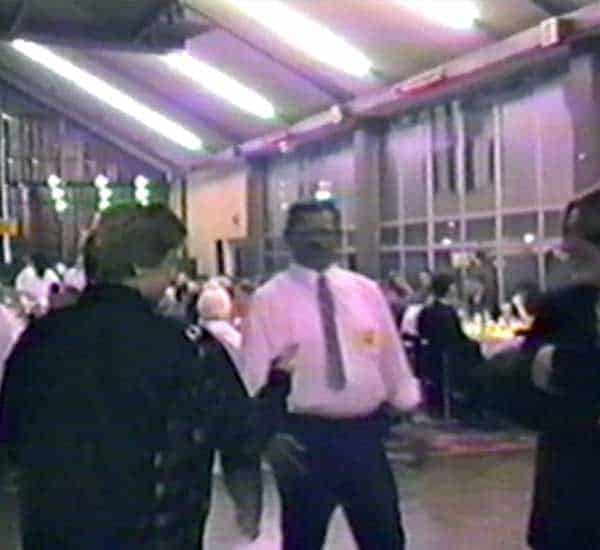
1992
video – Taonga source: Victoria University of Wellington
Jubilee Ball: Celebrating 50 Years of Deaf Schools in Auckland
Nearly 500 alumni and members of the Deaf community, well presented with dinner suits, bow ties, evening gowns, hairdos and the works enjoy an evening at the Avondale Racecourse.
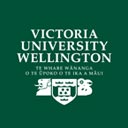
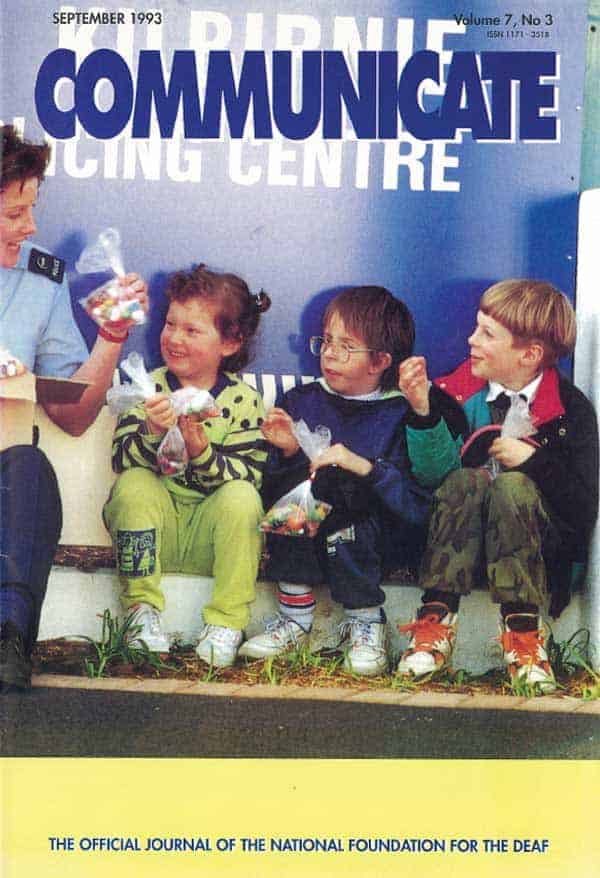
1993
publication – Taonga source: National Foundation for Deaf and Hard of Hearing
NFD Communicate: September 1993

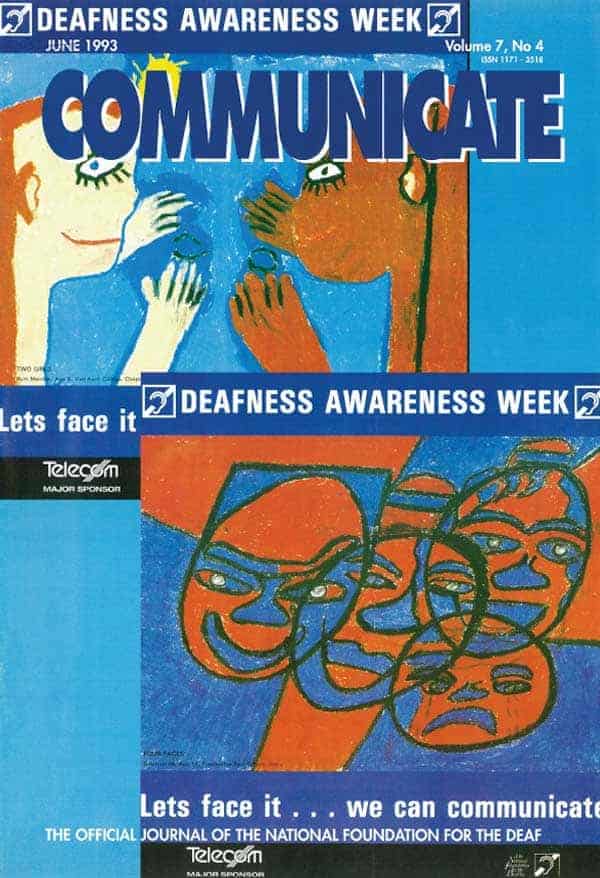
1993
publication – Taonga source: National Foundation for Deaf and Hard of Hearing
NFD Communicate: December 1993

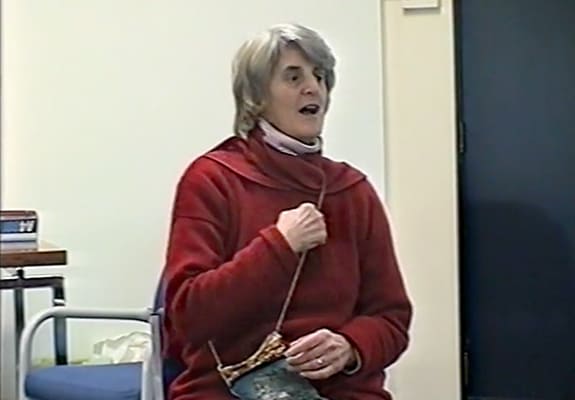
2002
video – Taonga source: AUT Visual Languages Section
Memories of Patreena Bryan
Patreena Bryan (also known as Pat, with her sign name being TAP – a play on her name) is filmed at AUT talking to NZSL interpreting students. Married with two sons, Patreena talks about her schooling days at Titirangi and her involvement with the Deaf community.

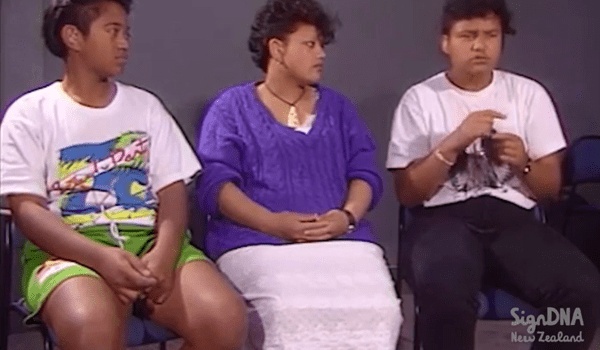
1991
video – Taonga source: Television New Zealand Archive
Māori Deaf and Deaf education
A look at the cultural education needs of Māori Deaf students. Māori Deaf are likely to experience more barriers in the education sector. Interviews undertaken by ‘Marae’ shows us that the multiple cultural identities of Māori Deaf are not completely accommodated for with aspirations on how to resolve this.

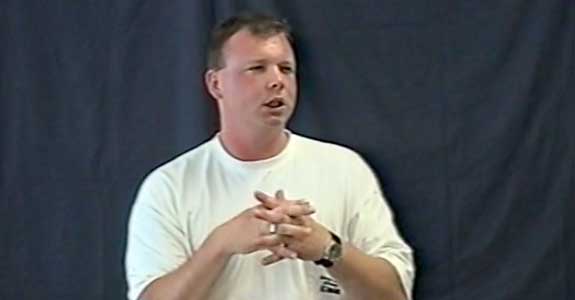
1997
video – Taonga source: AUT Visual Languages Section
Memories of Perry Strawson
Perry Strawson entertains with stories and funny tales from his life; what it’s like to enjoy sports and travel as a young Deaf man.

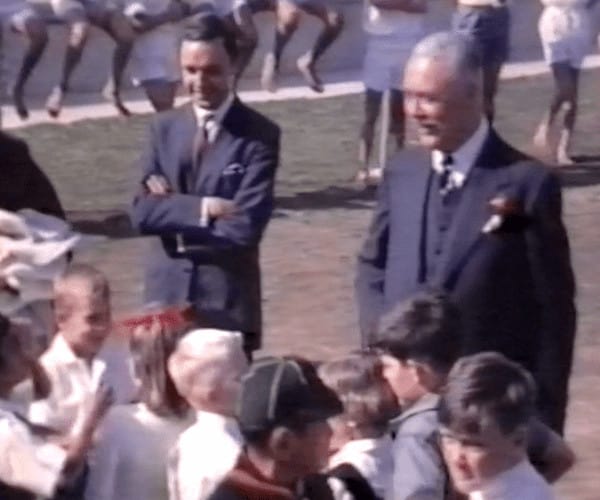
1964
video – Taonga source: Susan Hamilton
The Governor-General and his wife visits Kelston School for the Deaf
The Governor-General Sir Bernard and Lady Fergusson visited Kelston School for the Deaf on 4 April 1964. They were entertained by swimming and gymnastics display by its deaf pupils.

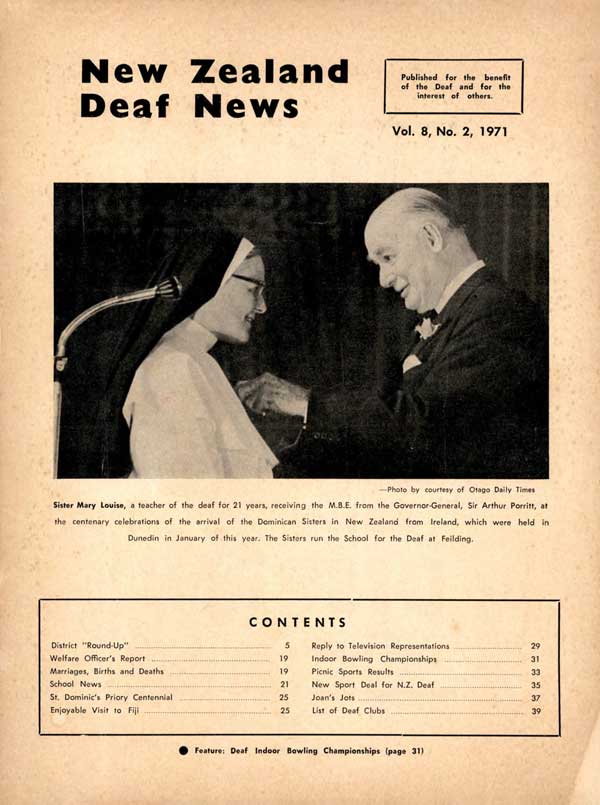
1971
publication – Taonga source: New Zealand Deaf News
NZ Deaf News: 1971 (Vol. 8, No. 2)
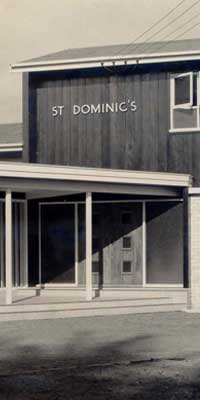
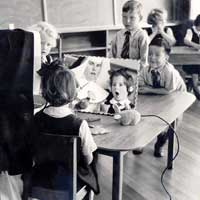
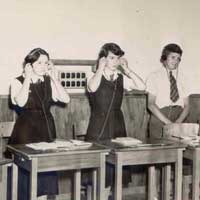
Est. 1944
Collection
St Dominic’s School for Deaf Children
We are all aware of the immense value St Dominic's has contributed to the New Zealand Deaf education sector. St Dominic’s School for the Deaf opened in 1944 to provide a Catholic based education to deaf children, and ran for 45 years before closing in May 1989.
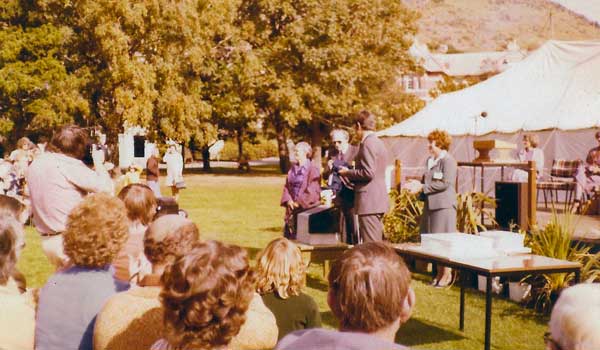
1980
video – Taonga source: Dennis Tod
Sumner School for the Deaf celebrates its centenary (100th)
Members of the Deaf community and their families attend the centenary celebrations at Sumner School for the Deaf.

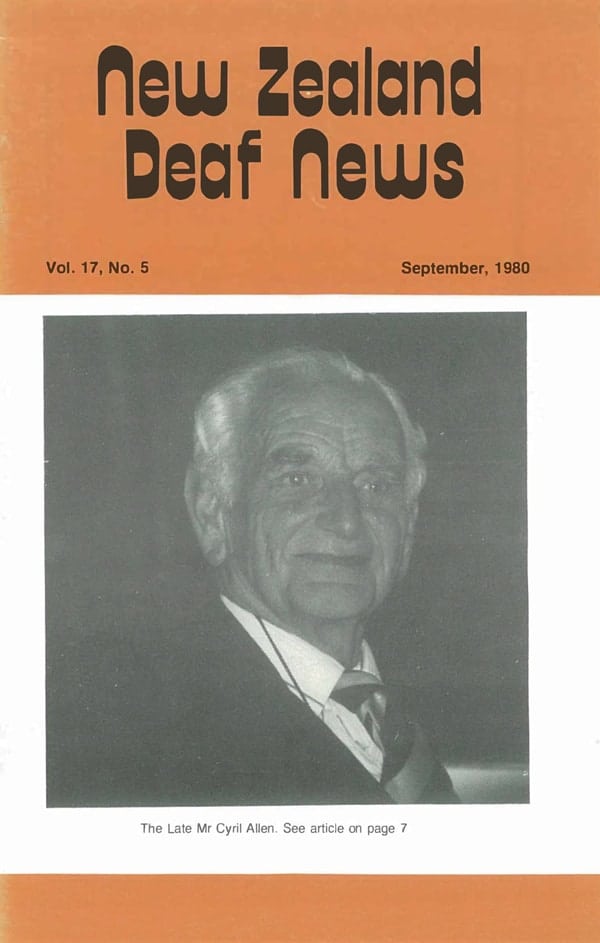
1980
publication – Taonga source: New Zealand Deaf News
NZ Deaf News: September 1980 (Vol. 17, No. 5)
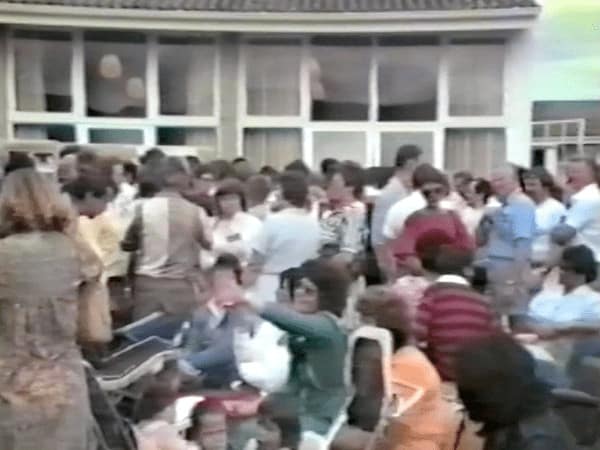
1984
video – Taonga source: Susan Hamilton
Auckland Schools for Deaf: 45th Reunion
Brief footage of the crowd at Kelston for its 45th reunion. The Auckland weather holds up for the outdoor festivities!


1989
video – Taonga source: Television New Zealand Archive
Interview with I. King Jordan about Deaf education
The first Deaf president of Gallaudet University, I. King Jordan, is visiting Christchurch, New Zealand for the World Games of the Deaf in January 1989. Dr King Jordan is interviewed about the changes he has implemented at Gallaudet University, and Deaf education in NZ.

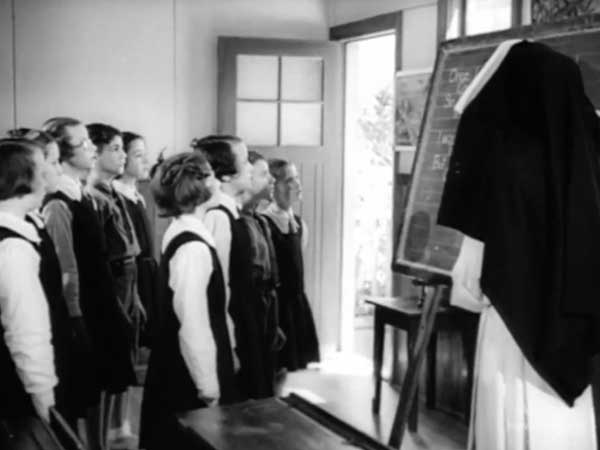
1950
video – Taonga source: Archives New Zealand
National Film Unit visits St Dominics School for the Deaf
The Government’s National Film Unit follows the City District Health Nurse as she visits students at St Dominic’s School for the Deaf.


1994
video – Taonga source: St Dominic’s Catholic Deaf Centre
Ex-pupils visit the old St Dominic’s school in Feilding
A tour of the old St Dominic’s school grounds in Feilding as part of the Golden Jubilee celebrations in April 1994. Ex-pupils explore the old school grounds and reminisce about their time here.

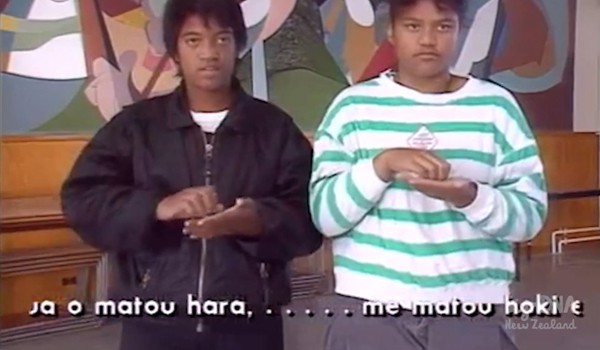
1991
video – Taonga source: Television New Zealand Archive
Two Deaf children sign a karakia
A karakia, the Lord’s Prayer, is given by two Deaf children using NZSL for the ‘Marae’ television series. This clip also contains Māori captions of the te reo Māori lyrics.

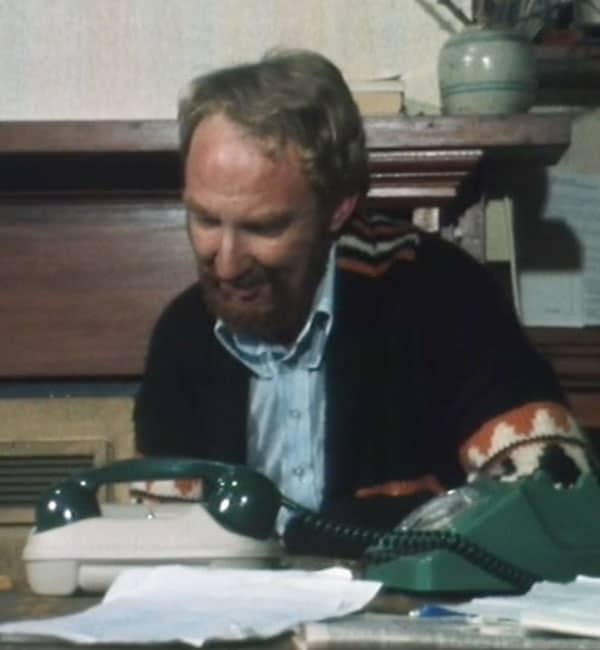
1978
video – Taonga source: St Dominic’s Catholic Deaf Centre
People like us – ‘Deaf Education and Technology’
A look into the world of Deaf people, in particular a glimpse into Deaf education at the time, and how technology improves the lives of Deaf people, with Daniel Beech demonstrating the use of a TTY.


2019
video – Taonga source: Attitude Pictures
Using sign language as a family
The Fergusons are an average family of five who have fun, sometimes fight but mostly get along. The main difference is that three of them are deaf, and NZSL is the first language for the whole family. How does this work in a busy household with two teens and a toddler? We spend a few days with the Fergusons and discover it works remarkably well. Especially for the eldest Zoe who is exploring advocating for New Zealand deaf youth.

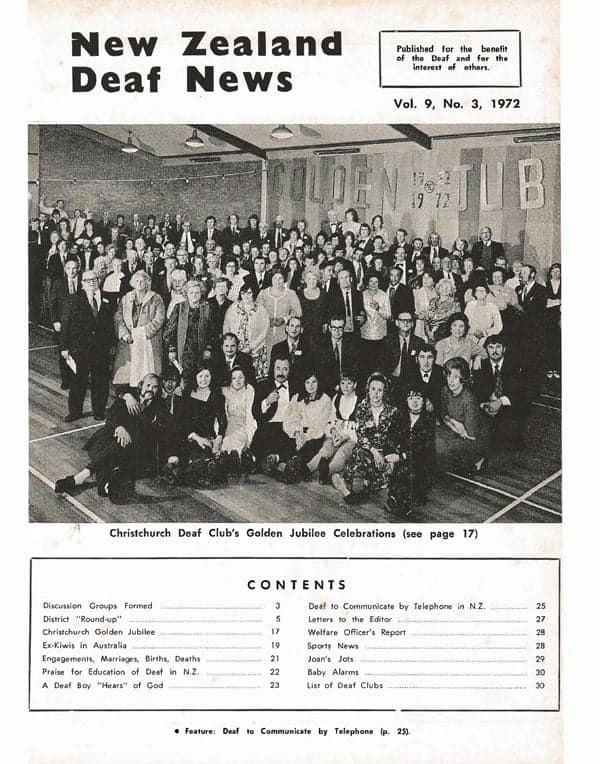
1972
publication – Taonga source: New Zealand Deaf News
NZ Deaf News: 1972 (Vol. 9, No. 3)
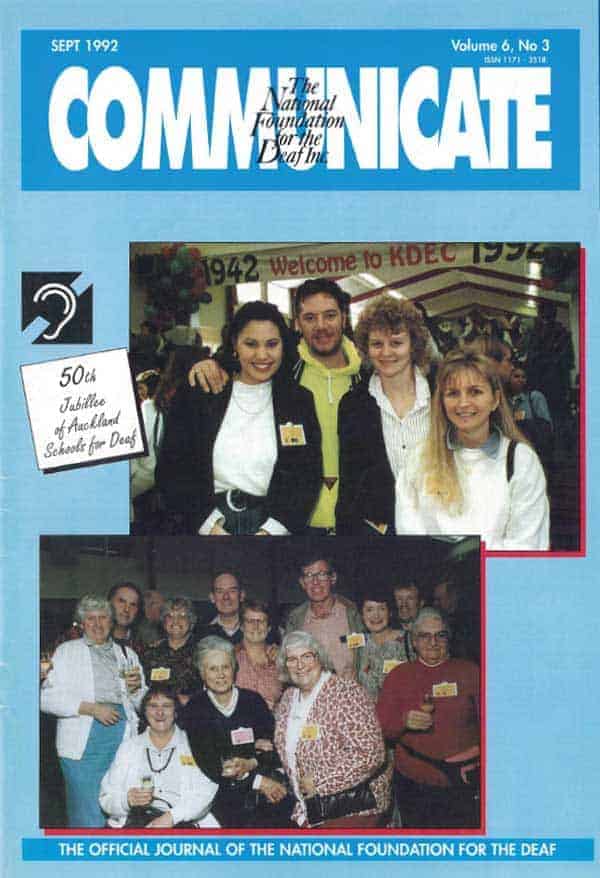
1992
publication – Taonga source: National Foundation for Deaf and Hard of Hearing
NFD Communicate: September 1992

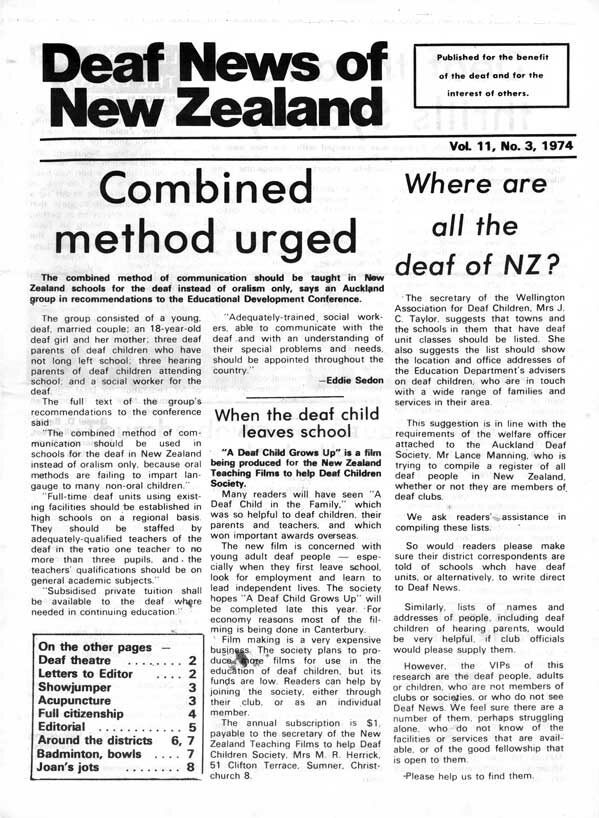
1974
publication – Taonga source: New Zealand Deaf News
Deaf News of New Zealand: 1974 (Vol. 11, No. 3)
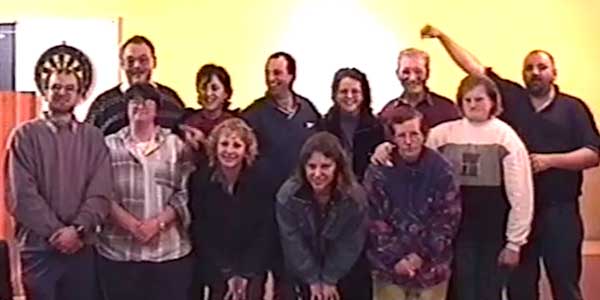
2000
video – Taonga source: Dorothy Jones
Manawatu Deaf community farewells Terry O’Brien
The Manawatu Deaf community thanks Terry O’Brien for his service as a Teacher of the Deaf. Terry taught for over 30 years at Freyberg High School in Palmerston North which had a Deaf Unit that St Dominic’s pupils often went on to attend.

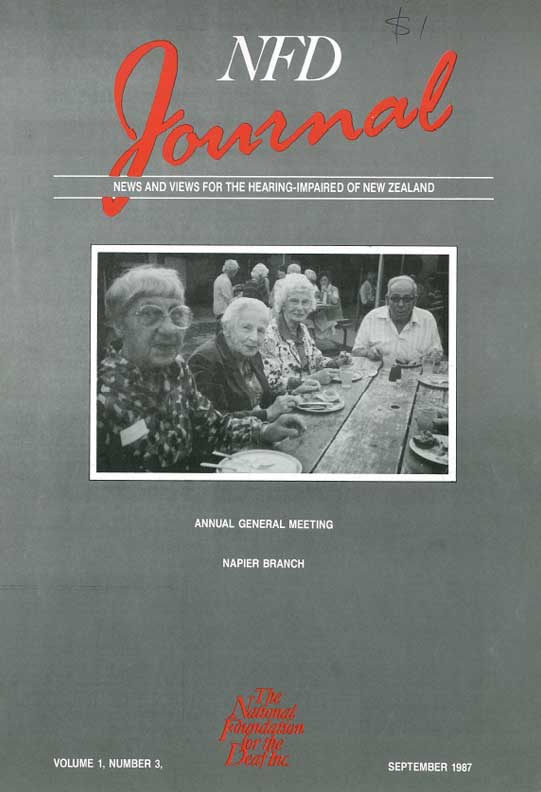
1987
publication – Taonga source: National Foundation for Deaf and Hard of Hearing
NFD Journal: September 1987 (Vol. 1, No. 3)


1955
video – Taonga source: Susan Hamilton
Annual Sports Day at Mt Wellington
Annual school sports day at the large grounds at Mt Wellington, with the school surrounded by farmland. The Titirangi children travelled to Mt Wellington by buses. Mt Wellington closed once the Kelston hostel block opened in 1960.

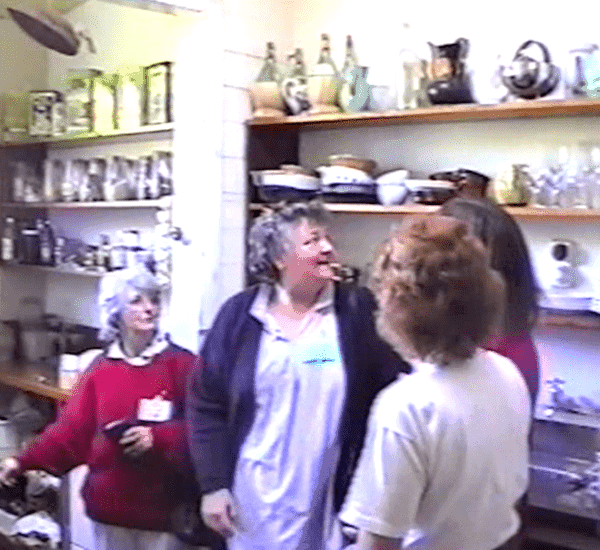
1994
video – Taonga source: St Dominic’s Catholic Deaf Centre
Pilgrimage to the original St Dominic’s Wellington school
A group of past pupils visit the original Dover Street location in Island Bay, Wellington, as part of the Golden Jubilee of the founding of St Dominic’s School for the Deaf.


1992
publication – Taonga source: National Foundation for Deaf and Hard of Hearing
NFD Communicate: June 1992


1955
video – Taonga source: Susan Hamilton
School for the Deaf pupils visit Auckland Zoo
Deaf pupils visit Auckland Zoo and enjoy group rides on an elephant at the zoo.

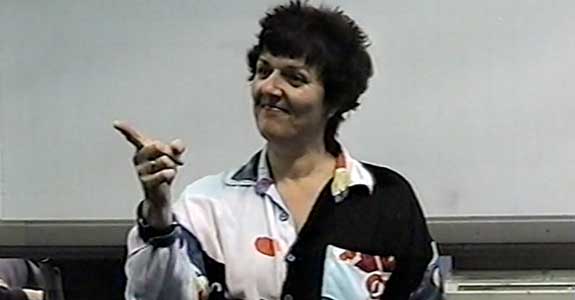
2002
video – Taonga source: AUT Visual Languages Section
Memories of Ava Buzzard (2002)
Ava Buzzard talks about life growing up in Christchurch, her hobbies, moving to Auckland as well as her children and their educational upbringing.


2018
video – Taonga source: Deaf Children New Zealand
NZSL and Us: Jorja Steele, Christchurch
Jorja loves to interact with Deaf students at her age and is a keen surfer. She uses NZSL at home and with both her Deaf and hearing peers. She attends a regular school, but it doesn’t stop her from being able to mingle with Deaf girls at age. Her mother is determined to allow Jorja to have the best of both worlds – Deaf and hearing.

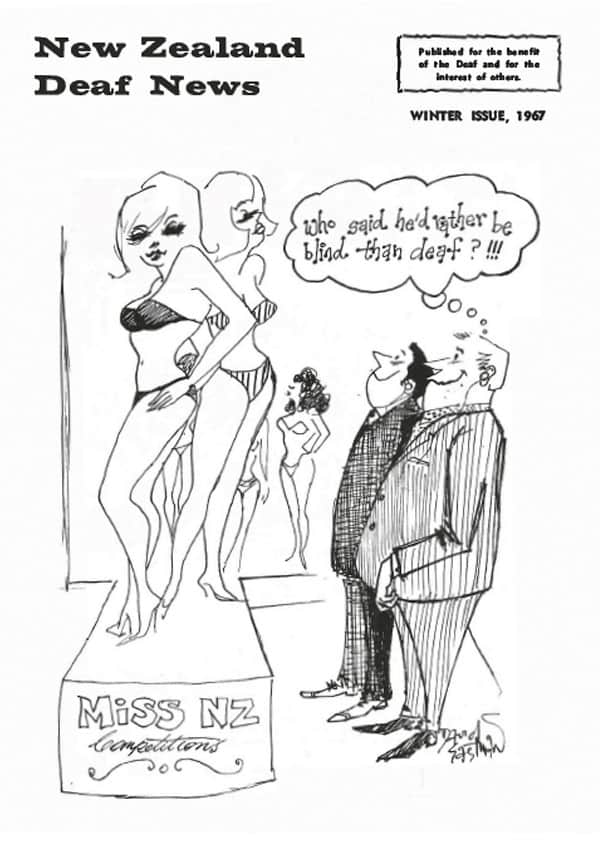
1967
publication – Taonga source: New Zealand Deaf News
NZ Deaf News: 1967 (Vol. 4, No. 4)
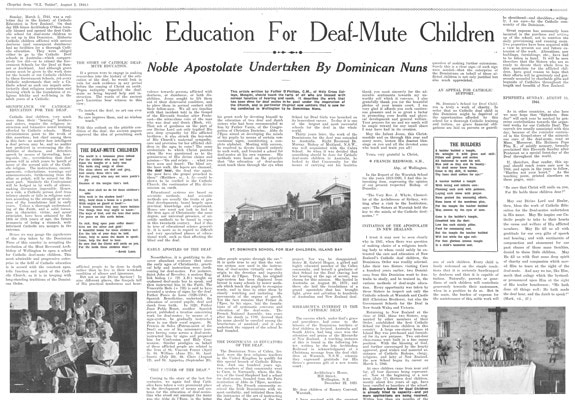
1944
article – Taonga source: NZ Tablet
Catholic Education For Deaf-Mute Children
The story of Catholic Deaf-Mute education, what has been done for deaf students by Dominican Nuns, and the new St. Dominic’s School for Deaf Children in Wellington.
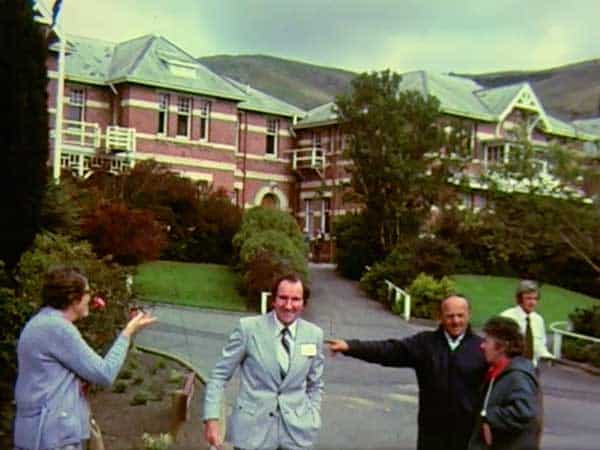
1980
video – Taonga source: Sue Penman
Sumner School for the Deaf 100 Years Centenary celebration
Footage by Sue Penman, of members of the Deaf community and their families attending the centenary celebrations at Sumner School for the Deaf, and taking a tour of the school.
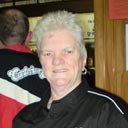
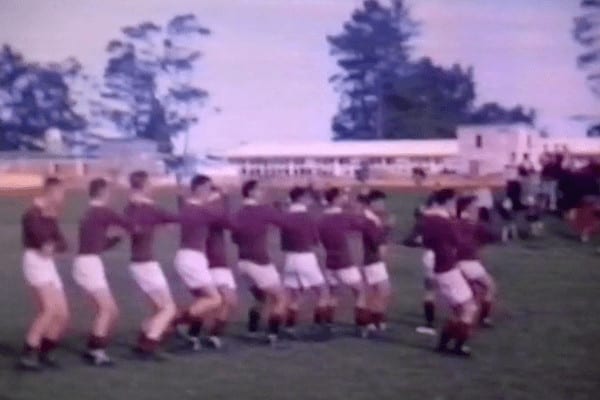
1958
video – Taonga source: Susan Hamilton
Rugby Union: Kelston vs St Kentigern College
Kelston School for the Deaf had a rugby team that played in the secondary school Grade 2C division, coming third in the 1958 season. Kelston beat St Kentigern 16 to 0.

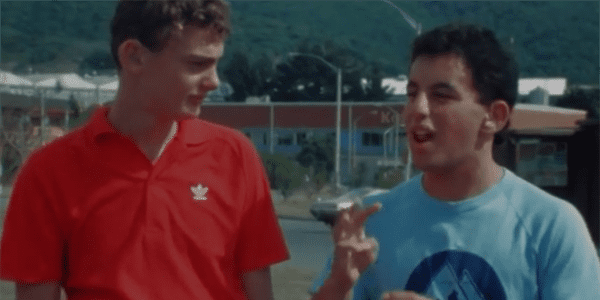
1988
video – Taonga source: Television New Zealand Archive
van Asch students learn street theatre skills from Mr Moon
After Mr Moon has been teaching Van Asch Deaf Education Centre Deaf students street theatre skills, they watch a performance from the Montreal Street Theatre at the New Zealand Festival in Wellington, in preparation for staging their own live performance.

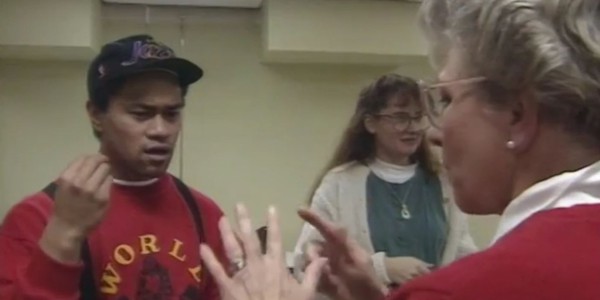
1992
video – Taonga source: Television New Zealand Archive
NZSL interpreting course begins
The first NZSL interpreting course has recently started in Auckland, being led by Drs. David and Rachel McKee. We take a peek at one of their NZSL classes, and Rachel predicts the areas of work graduates will go into.

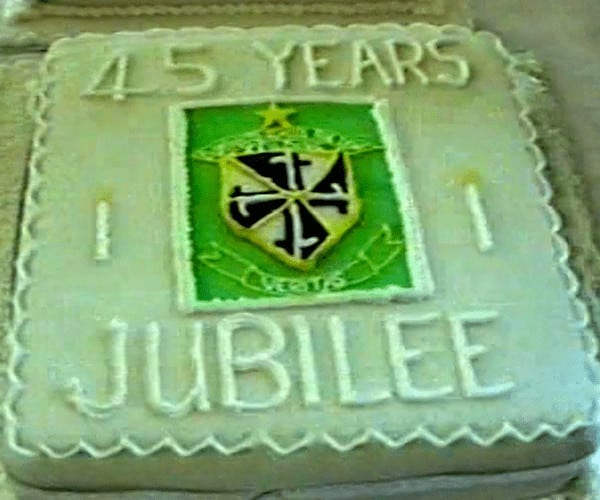
1989-90
video – Taonga source: St Dominic’s Catholic Deaf Centre
Four days of festivities at St Dominic’s 45th Jubilee
Footage of the St Dominic’s four-day 45th reunion depicts the cutting of the cake, friends, classmates and family catching up over a picnic on the lawn of the school grounds.

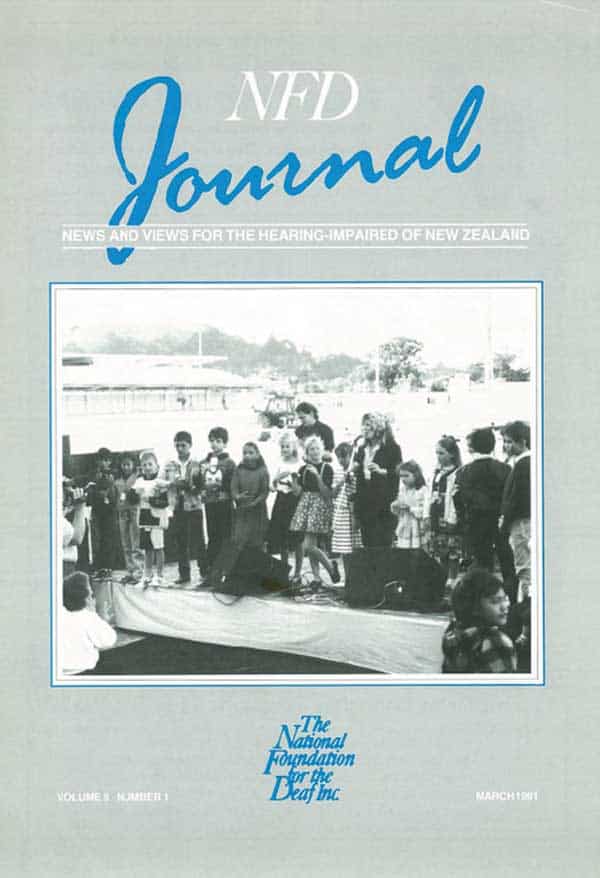
1991
publication – Taonga source: National Foundation for Deaf and Hard of Hearing
NFD Journal: March 1991 (Vol. 5, No. 1)

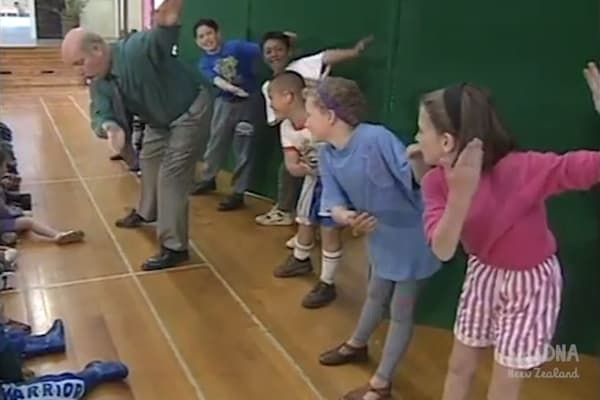
1995
video – Taonga source: Television New Zealand Archive
The inaugural Deaf Festival is hosted at Kelston Deaf Education Centre
Deaf children are taught drama skills by two Deaf visitors from the UK, in preparation for their show at the opening night of the inaugural Deaf Festival, hosted by Kelston Deaf Education Centre.

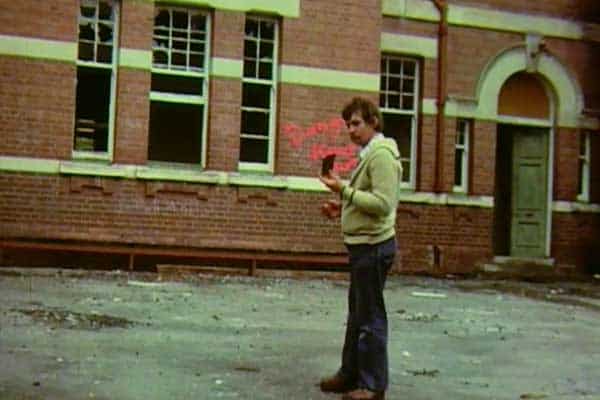
1980
video – Taonga source: Sue Penman
Demolition at van Asch, 1980
Footage of the demolition of the ‘Main Building’ of van Asch College, April 1980.

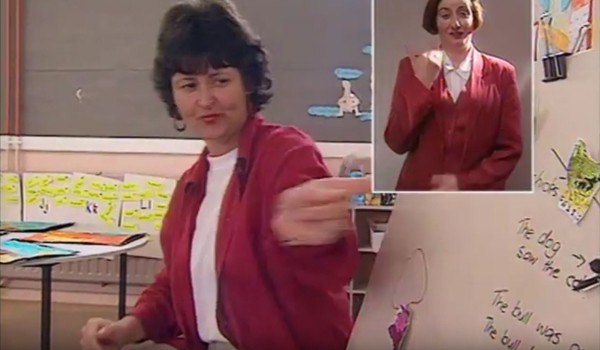
1996
video – Taonga source: Television New Zealand Archive
A look into the new bilingual approach at Kelston Deaf Education Centre
One of the goals of 1996’s Deaf Awareness Week was to better educate New Zealanders about New Zealand Sign Language, and as part of this, One Network News visited Kelston Deaf Education Centre in Auckland. KDEC which has a new bilingual teaching method using both NZSL and English.


1955
video – Taonga source: Susan Hamilton
Parent’s Day at Titirangi School for Deaf (1955)
Annual Parent’s Day at Titirangi School for Deaf, where students show their parents around the school and put on a performance – tumbling, boxing, puppetry, ball handing and ballet.

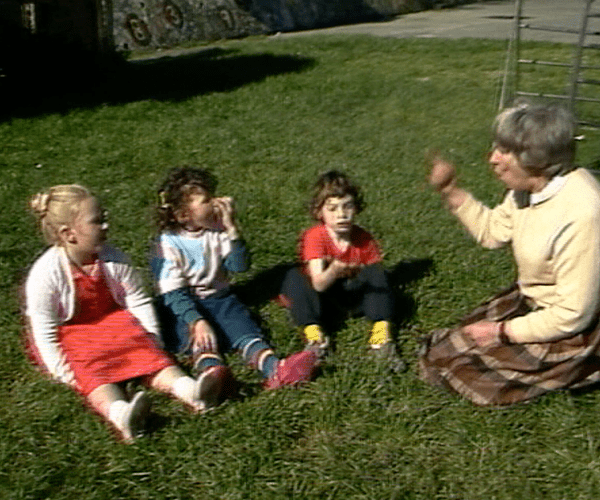
1986
video – Taonga source: Television New Zealand Archive
Te Aro Deaf students featured in ‘The Video Dispatch’
Heather Campbell, a Teacher of the Deaf, talks about the need for Deaf children and their families to have access to language early in life. This episode screened during Deaf Awareness Week in 1986.

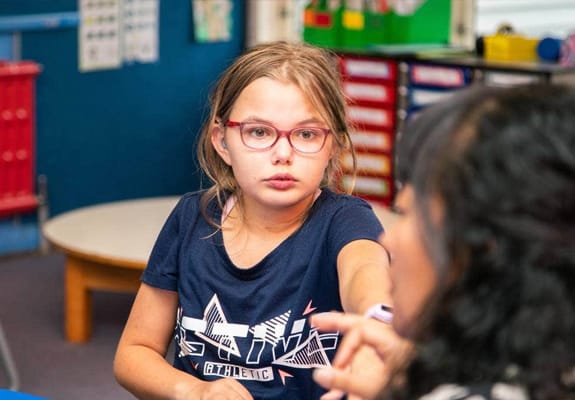
2022
article – Taonga source: Stuff
Unique Wellington school for Deaf students where sign language rules could help more kids, community says
Parents and teachers at a unique school for Deaf students within a school believe more children in Wellington could benefit from the service. And they are calling for a high school to be set up to teach Deaf students across the region.


1959
video – Taonga source: Susan Hamilton
Sports Day at Kelston School for the Deaf
The School for Deaf annual sports day is held at Kelston with athletics, long jumping, relay races and performances.

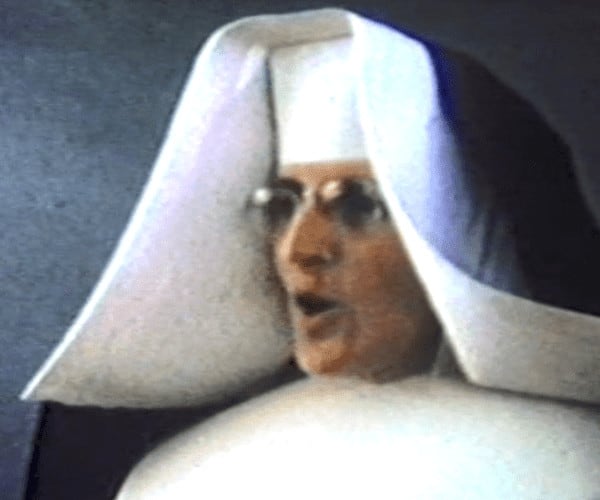
1965
video – Taonga source: St Dominic’s Catholic Deaf Centre
St Dominic’s gives a Catholic education to Deaf boys and girls
Several clips of teaching and classroom scenes at St Dominic’s School for the Deaf, with one-on-one speech therapy, oral communication methods, a physical education class, the Rotarians Picnic Drive, playing with jet aeroplanes, folk dancing and their annual Christmas party.


1978
article – Taonga source: Unknown
Shared Benefits at Sumner
Sumner School for Deaf Children has taken an adventurous step by beginning a trial integration of a class of 'hearing' children into the school.

1950
video – Taonga source: Susan Hamilton
Titirangi School for the Deaf hosts its annual Christmas party
Deaf students dress up and parade around the back of Titirangi School for the Deaf at its annual Christmas party.


1980
article – Taonga source: Education News
“Deaf kids aren’t dumb you know?” 100 Years of Education for the Deaf
Van Asch College, as it will now be known, is no longer a school exclusively for the deaf.
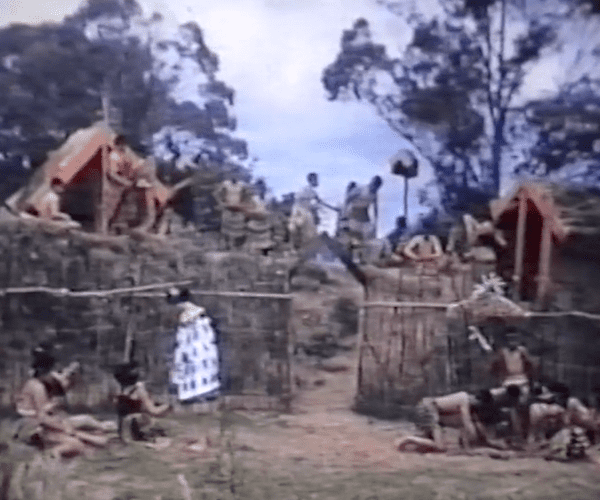
1959
video – Taonga source: Susan Hamilton
Extended version: Te Pakanga o Whau performs at the opening ceremony of Kelston
The opening of Kelston on a site in Archibald Road featured the infamous ‘Te Pakanga o Whau’ (The Battle of Whau) in 1959 where 86 deaf students acted in an outside play featuring a Māori-Pakeha battle near a big gum tree field.


1959
video – Taonga source: Susan Hamilton
Parent’s Day at Kelston School for the Deaf (1959)
Annual Parent’s Day at Kelston School for the Deaf, with rides (horses, fire tank and alike!), performances and end-of-year prizes.

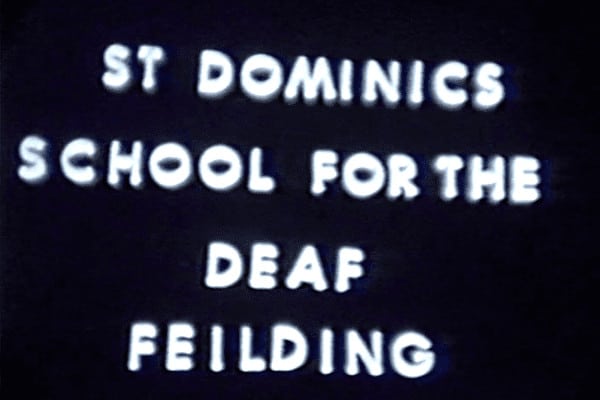
1965
video – Taonga source: St Dominic’s Catholic Deaf Centre
Twenty-One Years: St Dominic’s at Feilding
A look at St Dominic’s School for the Deaf twenty-one years after its opening at Dover Street, to its relocation to Feilding. ‘Twenty-One Years’ features speech therapy, classroom activities and ballet, swimming and sewing lessons, as well as its infamous Gala Day and a Mass in its Chapel.


1970
article – Taonga source: The Times.
Problem that too often falls on ‘deaf ears’…
In Hamilton, there are four deaf units, three at Hamilton West and one at Melville Intermediate. Next year there is going to be a deaf unit at Melville High School.

2011
video – Taonga source: Asia Downunder
I’m Deaf, Let’s Talk
Meet Karishma Mohan, one of the faces of NZSL Week 2011. Here, we get a glimpse of Karishma's life – both home, work and socially. She is studying to become a teacher with a practicum at Kelston Deaf Education Centre's pre-school.


1998
publication – Taonga source: National Foundation for Deaf and Hard of Hearing
NFD Communicate: Summer 1998

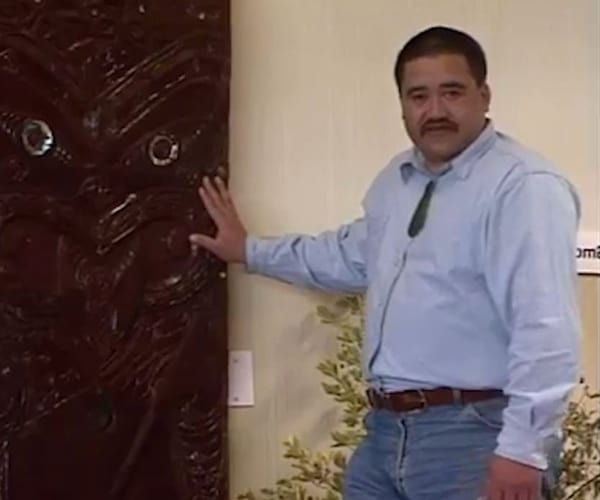
1995
video – Taonga source: Television New Zealand Archive
Michael Wi, Māori Deaf
Michael Wi, is profiled on ‘Marae’, where he shares his experience of growing up as Māori Deaf in a paheka-centric education environment, and learning as an adult about tikanga Māori, and marae protocols.

